I Guess You Wonder
Where I’ve Been
PARTICIPATING ARTISTS
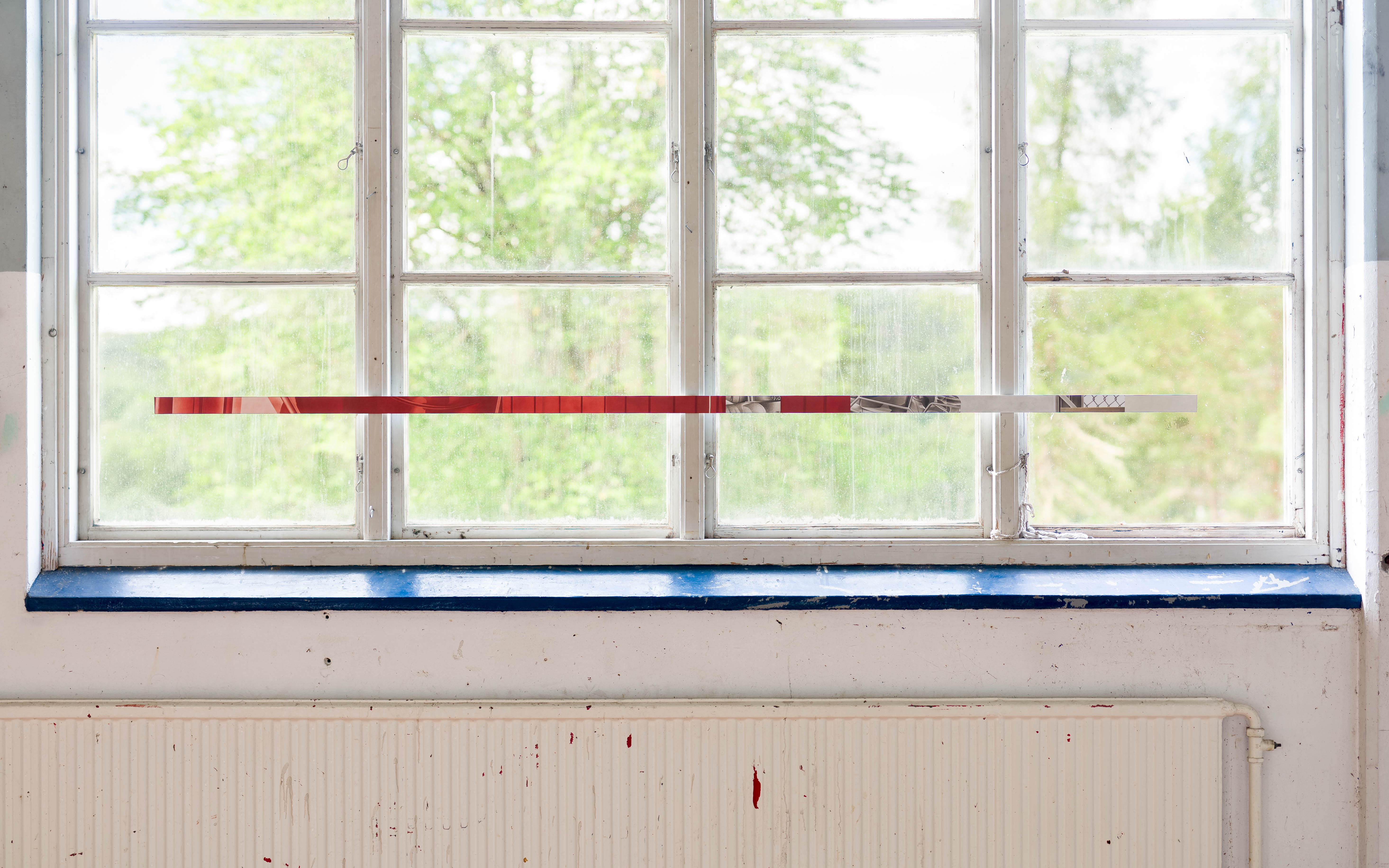
As I witnessed the final days of build up to this show, speaking with the artists and watching
them produce, it became clear to me that despite the diversity of approaches taken, these
residents have built something collective. Consciously or not, the residents forged a bond
amongst themselves and their practices through a common desire; a desire to work through
the memories this space holds—both material and symbolic—and in turn produce something
new with them.
(read more)
These paintings, at first glance, hide more than they reveal. They are somewhat hidden themselves, blending into the architecture of the exhibition space—hindered, elusive images whose bodies were once part of it, part of this space, torn out, discarded, and then became part of it again. But they are changed now, altered, painted. It's hard to discern what's depicted; they are poorly lit, perched too high under the rafters, or missed altogether. They offer only a fragmentary glimpse.
You have to come close, almost uncomfortably so, to make out any detail. Is it like peering through the narrow slit of a letterbox into a stranger's home? Who's inside? Is anybody home at all? Are they looking back at you through gaps in the shutter blinds? Perhaps you're passing by a fence, and something just out of sight catches your eye—a sliver of a scene obscured from sight. Was there movement? What's happening behind it? Stop, step closer, peek through.
Chairs - 4 × 465 × 3 cm, oil on aluminium
Strap - 4 × 465 × 3 cm, oil on aluminium
Hybrida - 4 × 240 cm, oil on aluminium
Horch - 40 × 39.7 cm, oil on steel
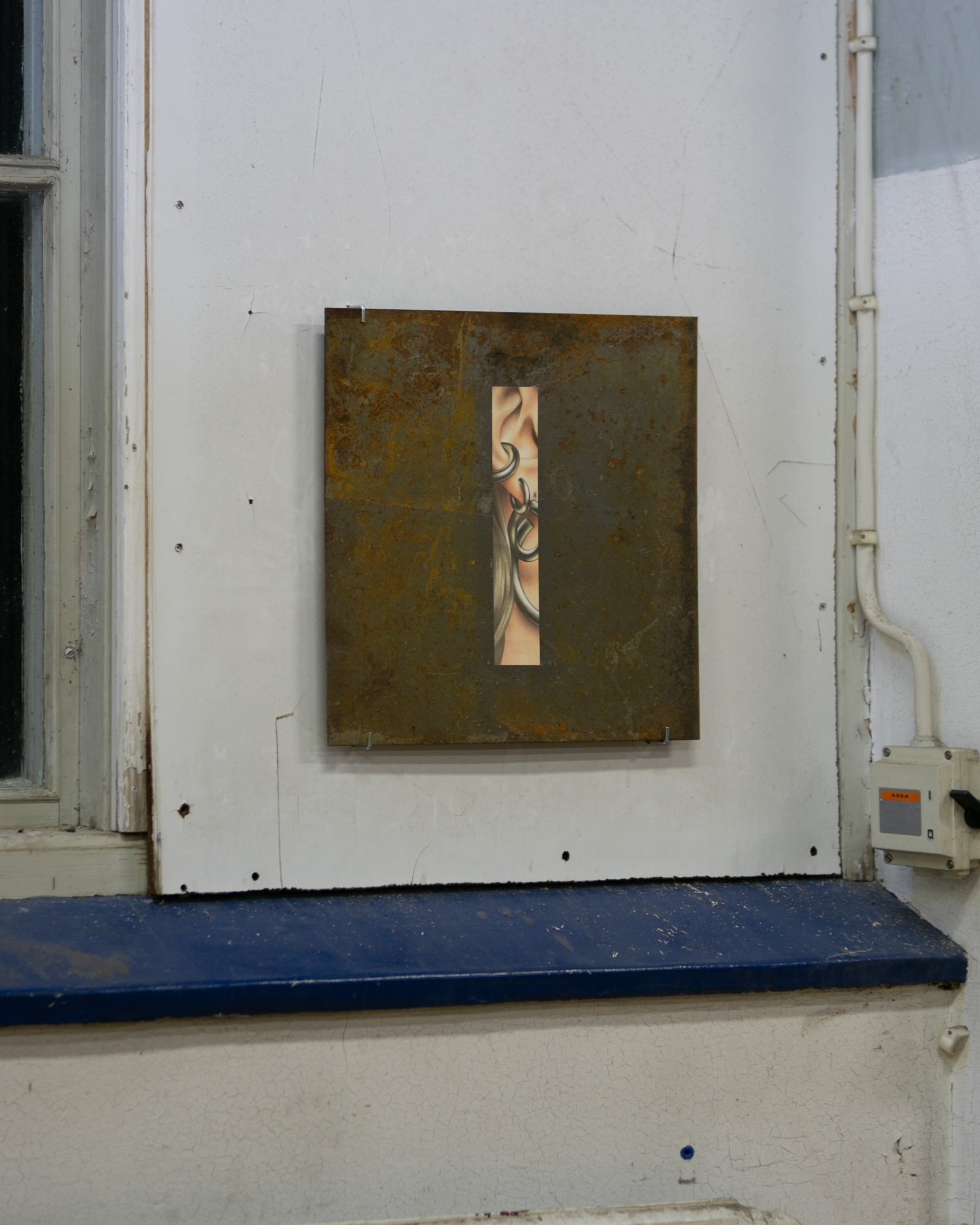
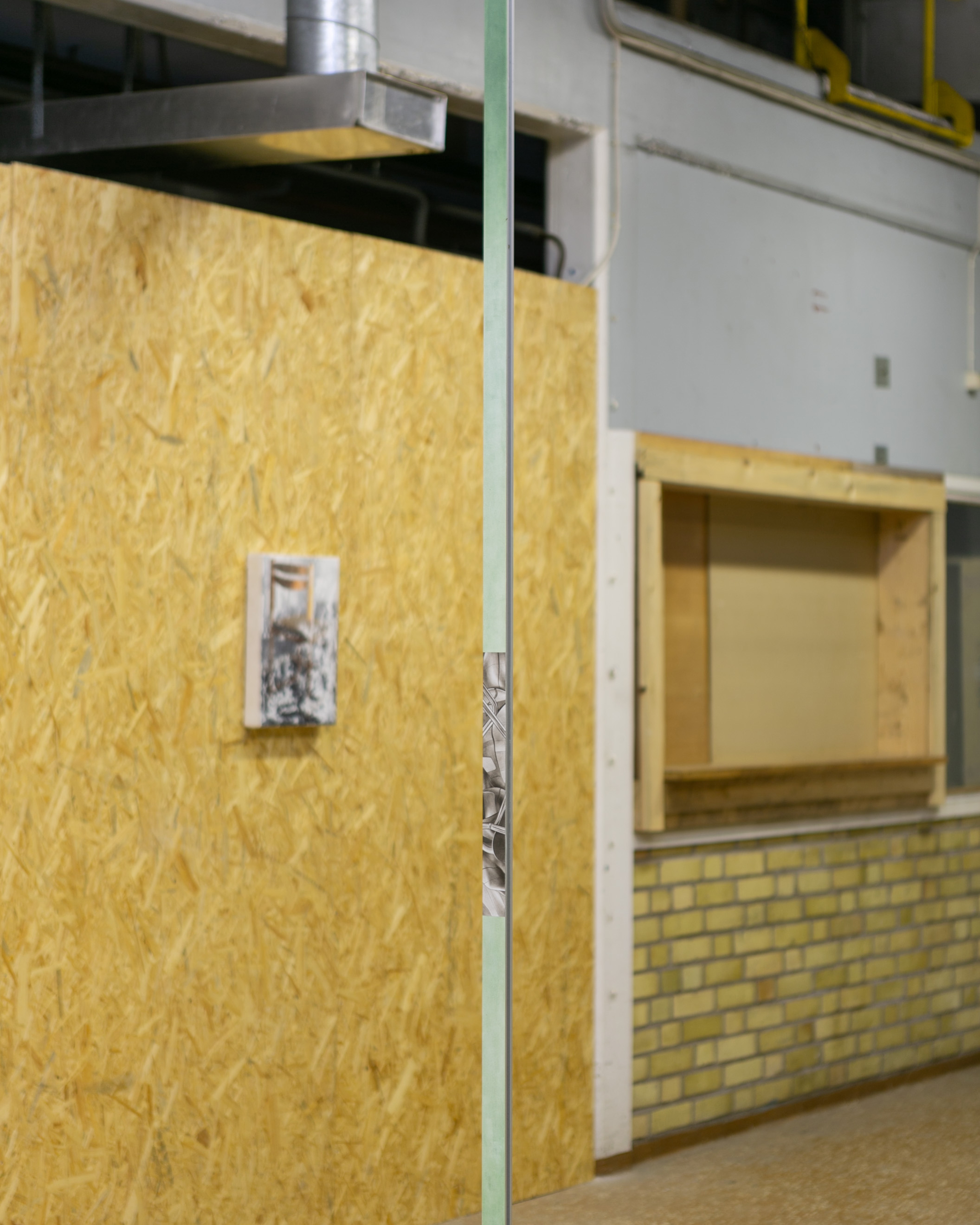
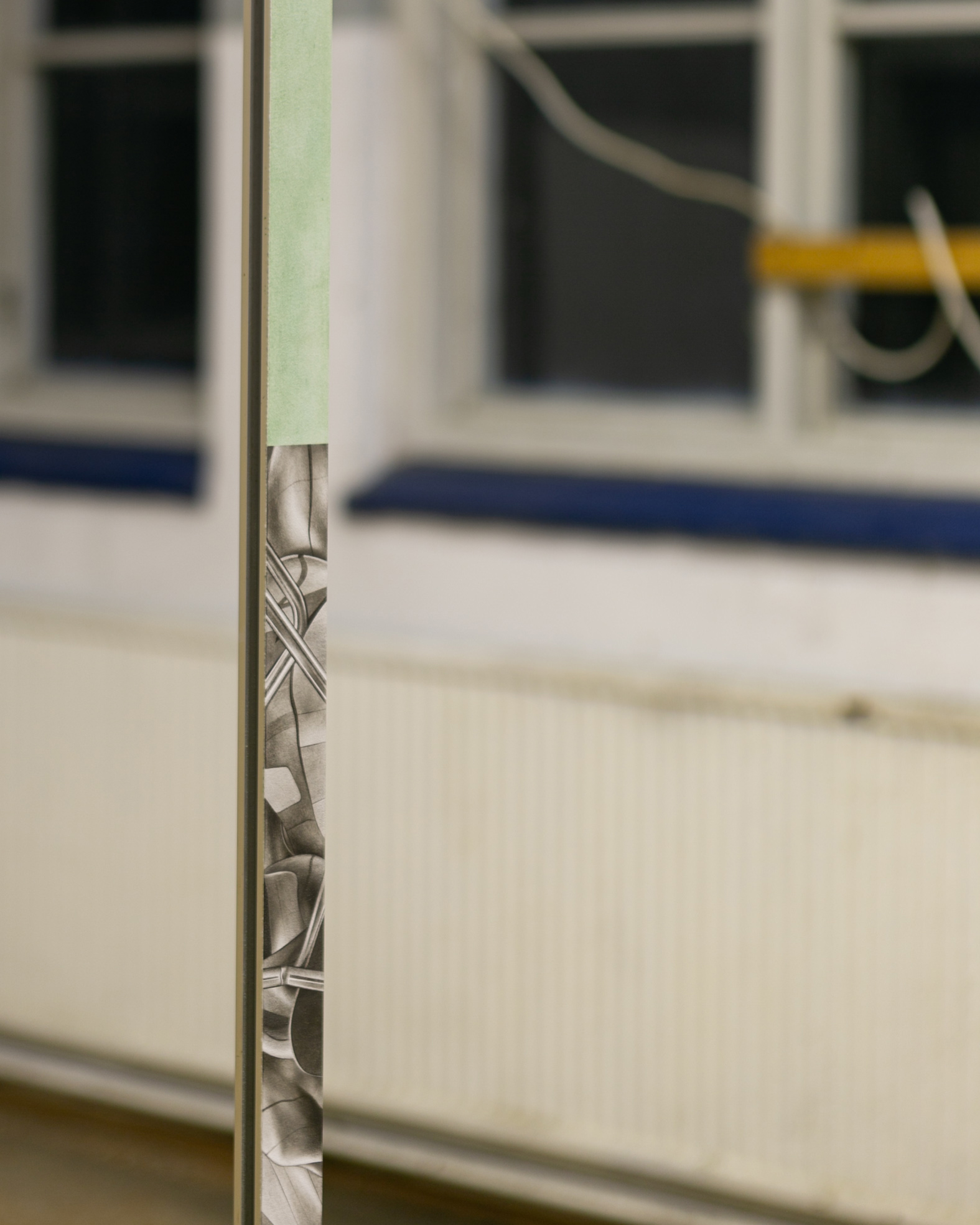
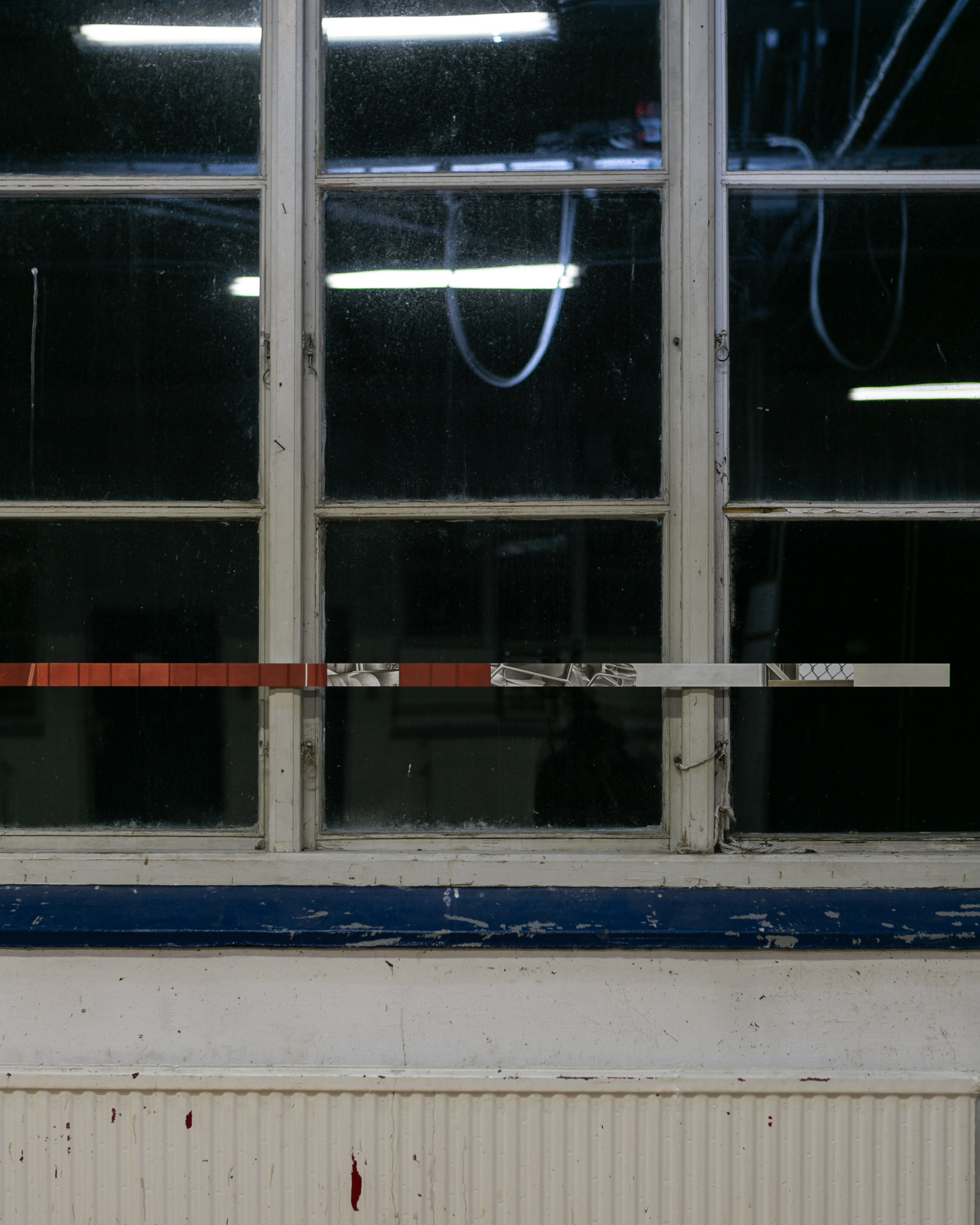
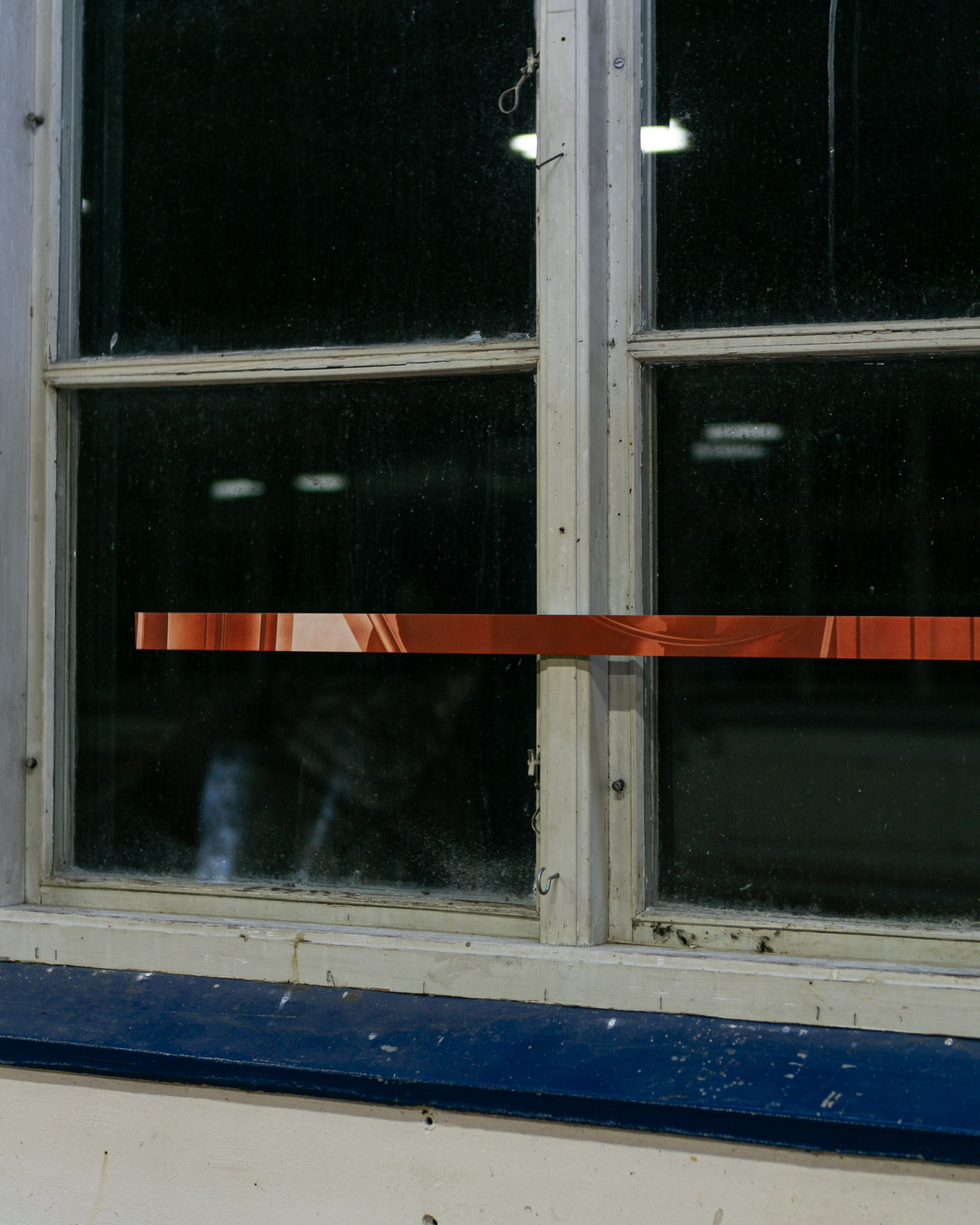
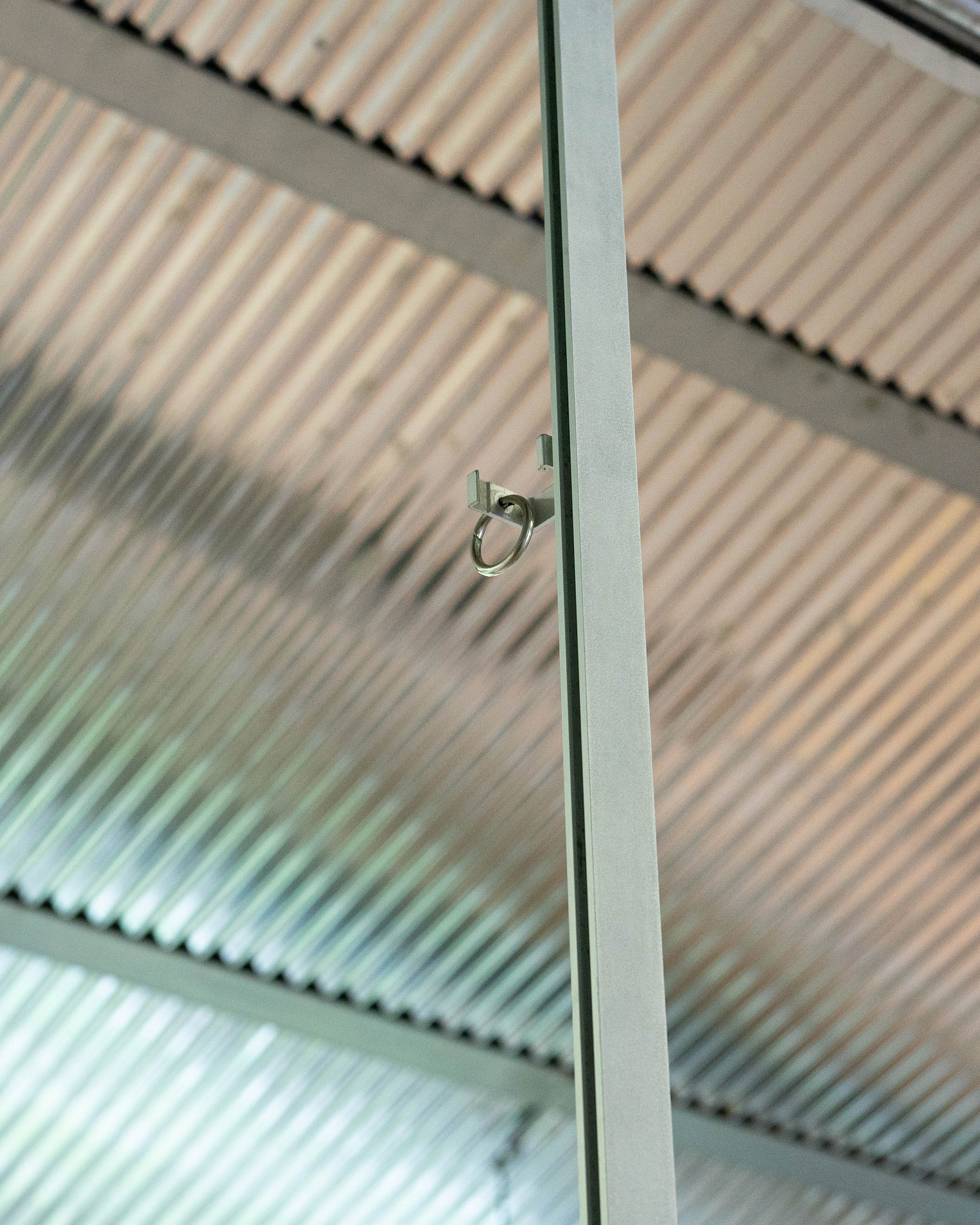
The works that Mikkel made during his residency at Hybrida, are all photographs taken from the house in which he and the other participants lived. Mikkel worked with a kind of emptiness which can also be seen as a form of curiosity or a boring sense of humor. The small things as a cup with mosquito net protecting nothing. A chair in the evening light standing in a corner. Toilet paper with ink from the fountain pen I use to write notes. At last there is a bigger work that shows a “beautiful” picture of a flower, but the flower when looking closer is not real, it’s a plastic flower surrounded by other plastic flowers which are all collected from around the house where we are living. In a way it all depicts a kind of thought process about surroundings, but showing the internal.
Flowers (forever) - 110x150 cm, cotton canvas, aluminum stretcher, stables, gesso, gel medium, photo transfer.
Cup and mosquito net - 30x40 cm, cotton canvas, aluminum stretcher, stables, gesso, gel medium, photo transfer.
Toiletpaper with ink - 30x40 cm, cotton canvas, aluminum stretcher, stables, gesso, gel medium, photo transfer.
Chair in a corner - 30x40 cm, cotton canvas, aluminum stretcher, stables, gesso, gel medium, photo transfer.
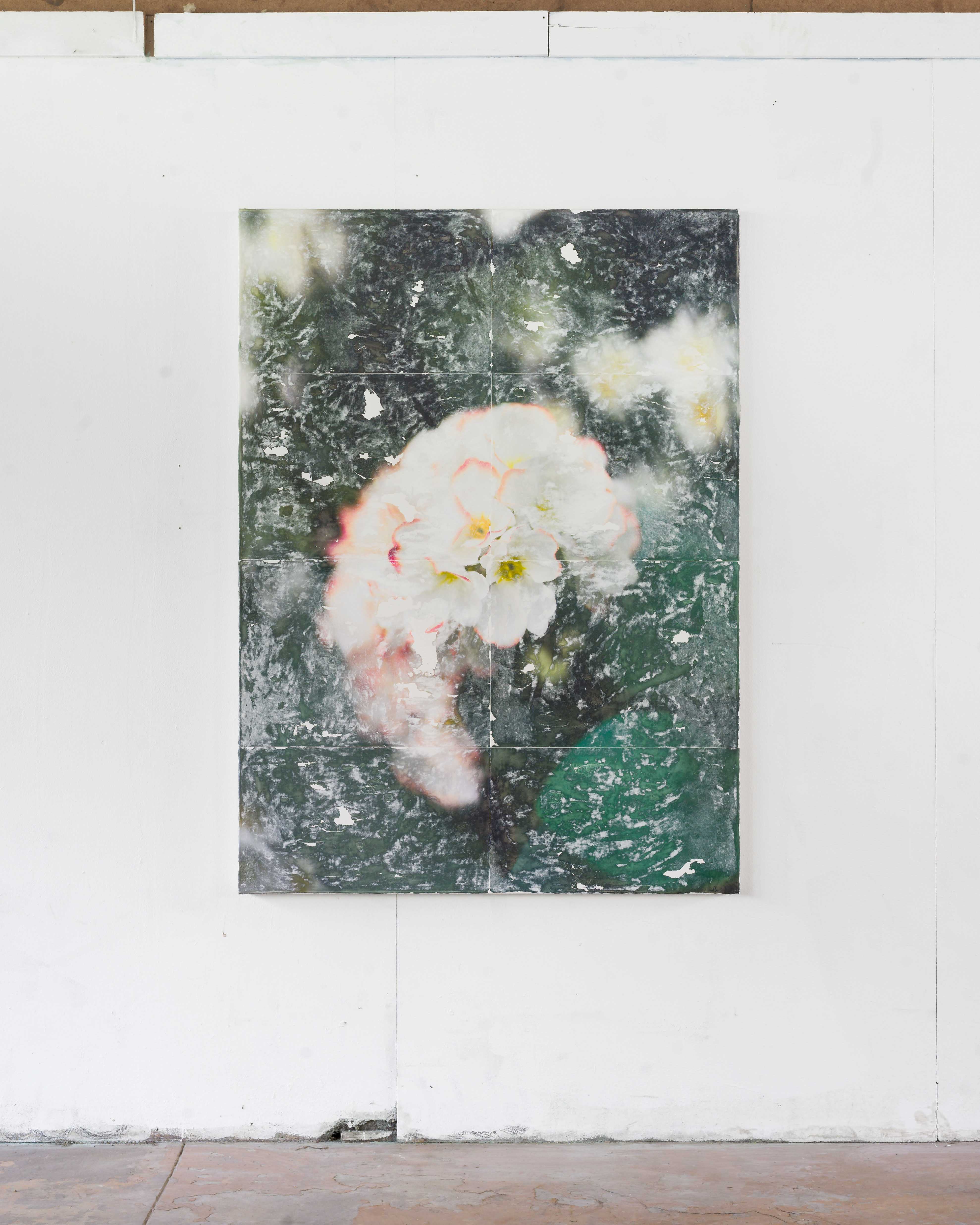
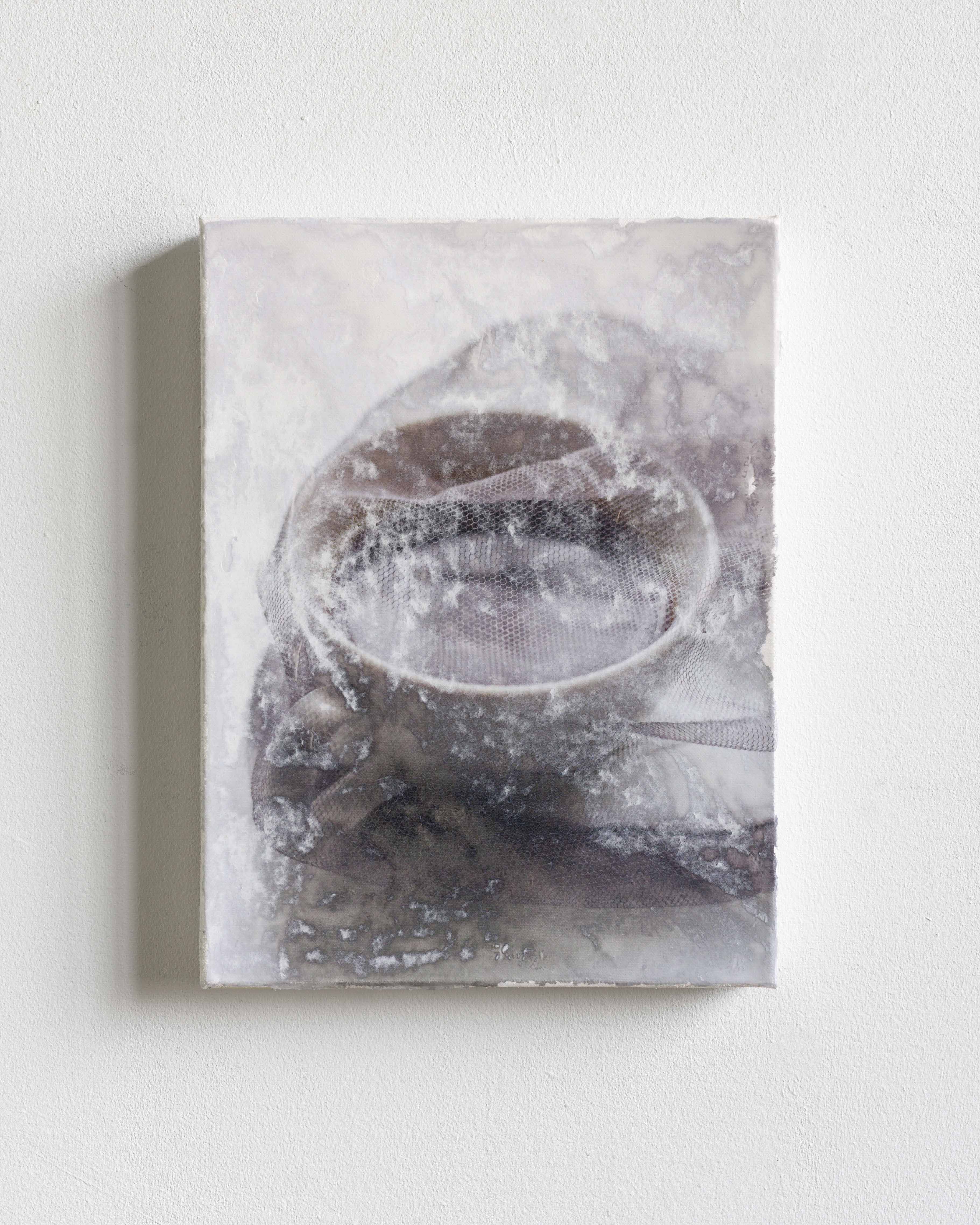
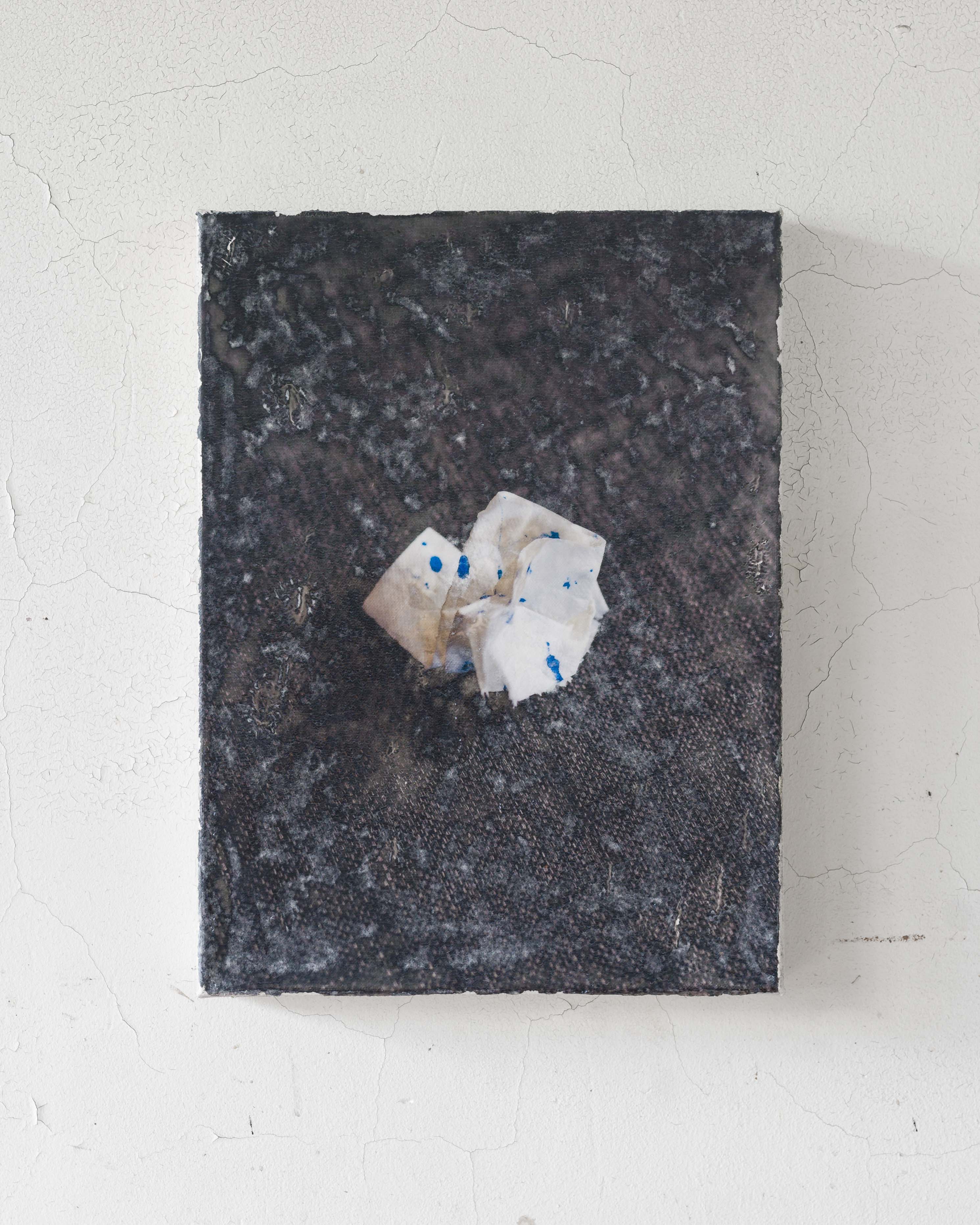
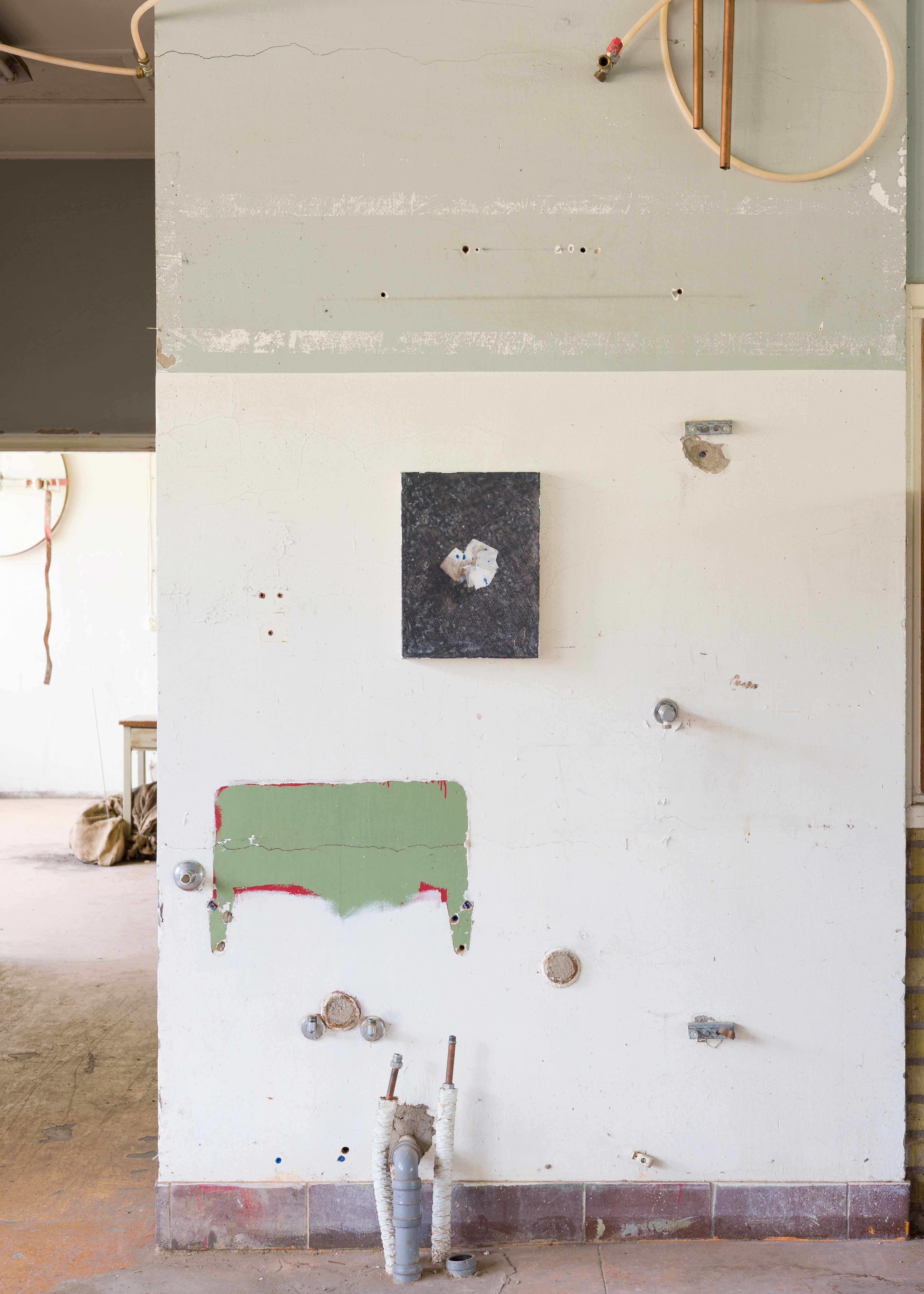
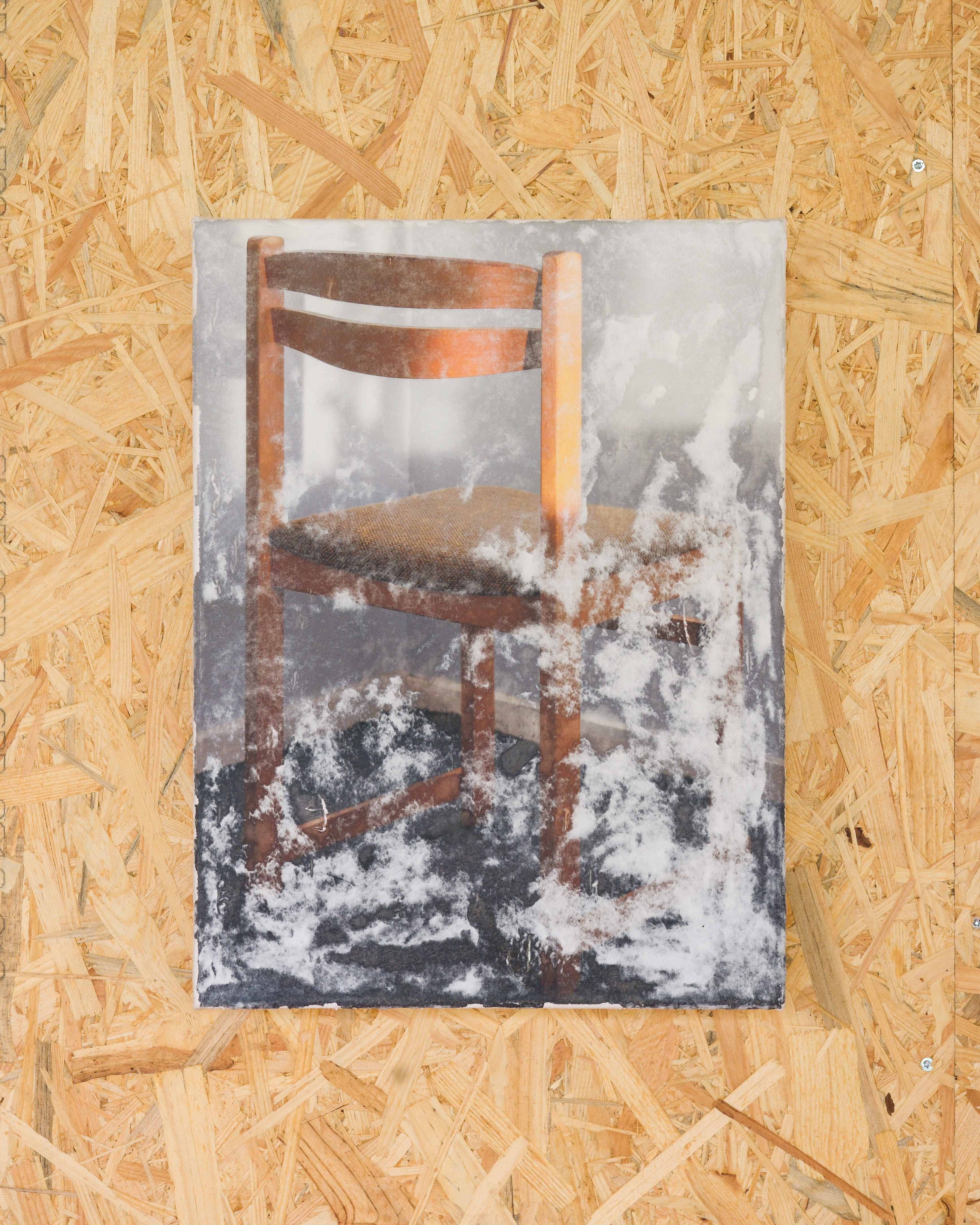
Full Body Search is an iconographic series that depicts various relations between the body and authority, spanning various sizes, materials, and methods. The imagery departs from the choreography of bodies and interfaces one partakes in when passing through airport security checkpoints. Full Body Search is rendered on paper with pencil, as a relief on copper plates using pressure, and by drilling holes into wall partitions.
Gains And Losses was produced by drilling holes of various sizes into a discarded wooden table using hole saws.The removed fragments are then stacked with threaded rods and reinserted into the table. Gains And Losses stands for a system with finite resources, wherein someone's gain is another's loss. The piece embodies the asymmetric allocation of resources and power between the global south and wealthy countries, wherein an inverse correlation between the building of skyscrapers in the north and the decrease of habitable land in the south has become ever more apparent.
Full Body Search-57×48.5cm, Pencil on Paper
Full Body Search-38×24cm, Copper Plates Framed in Aluminium
Full Body Search-465×90×20cm, Partition Wall
Gains And Loses-150x150x180cm, Table, Steel Thread Rods
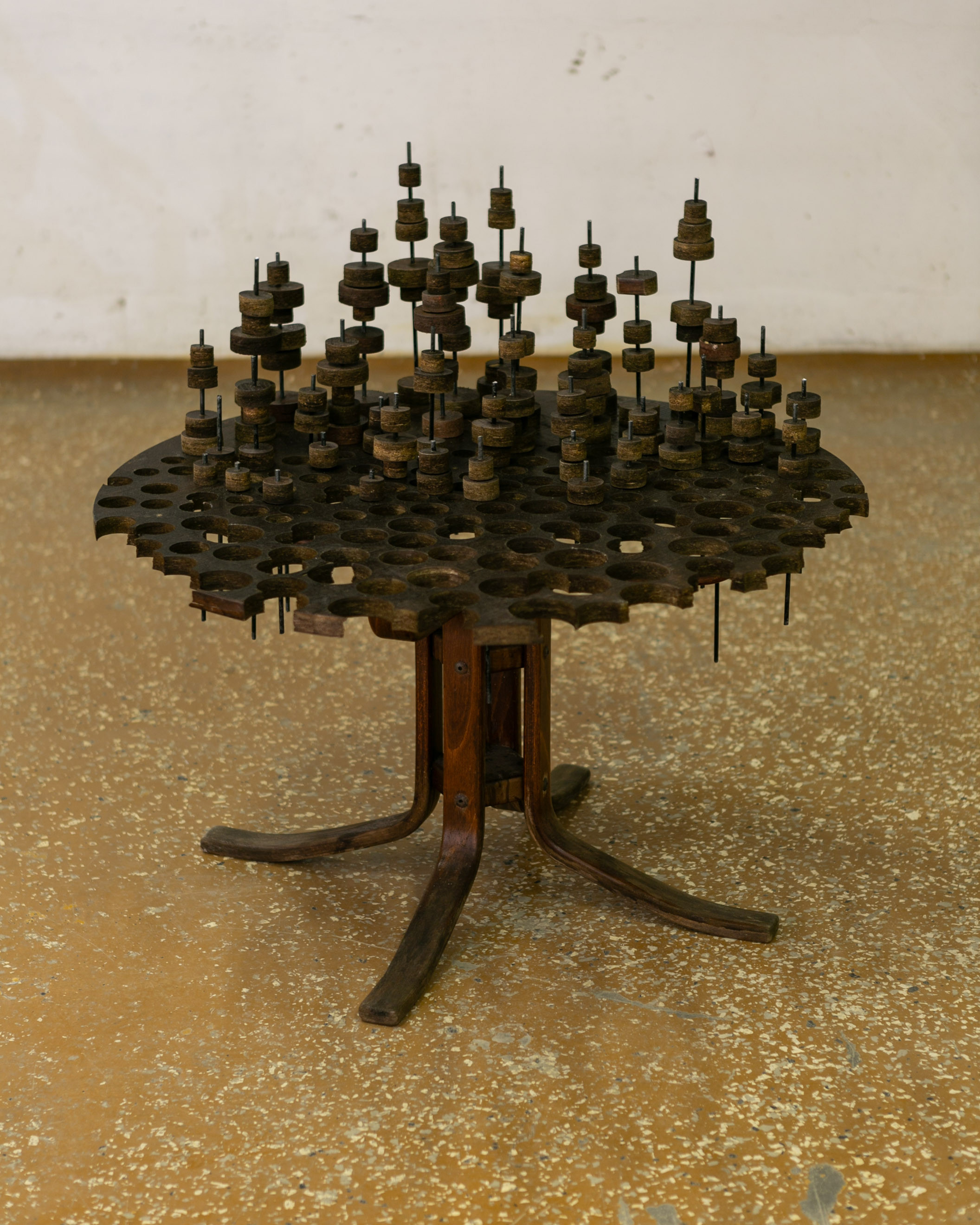
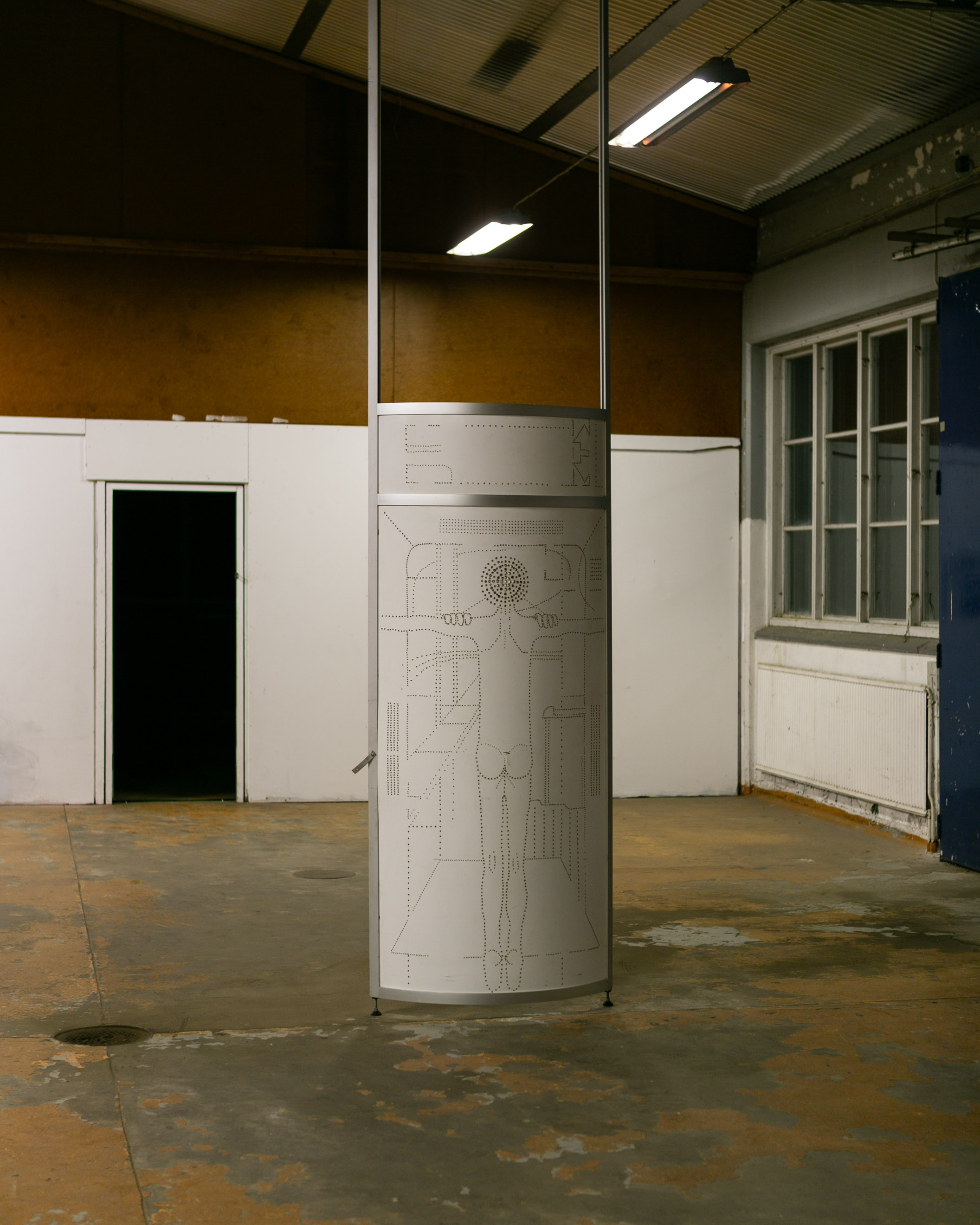

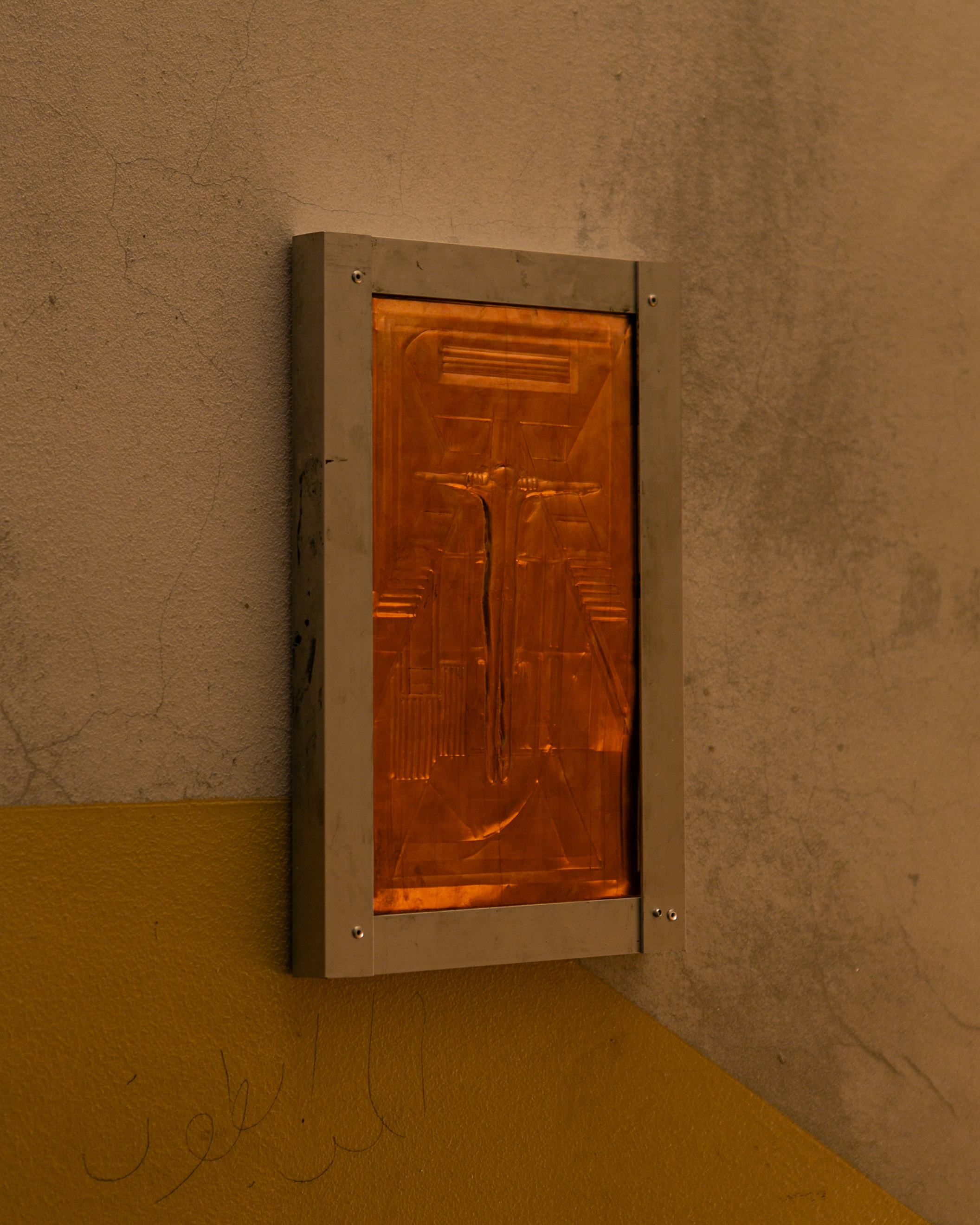
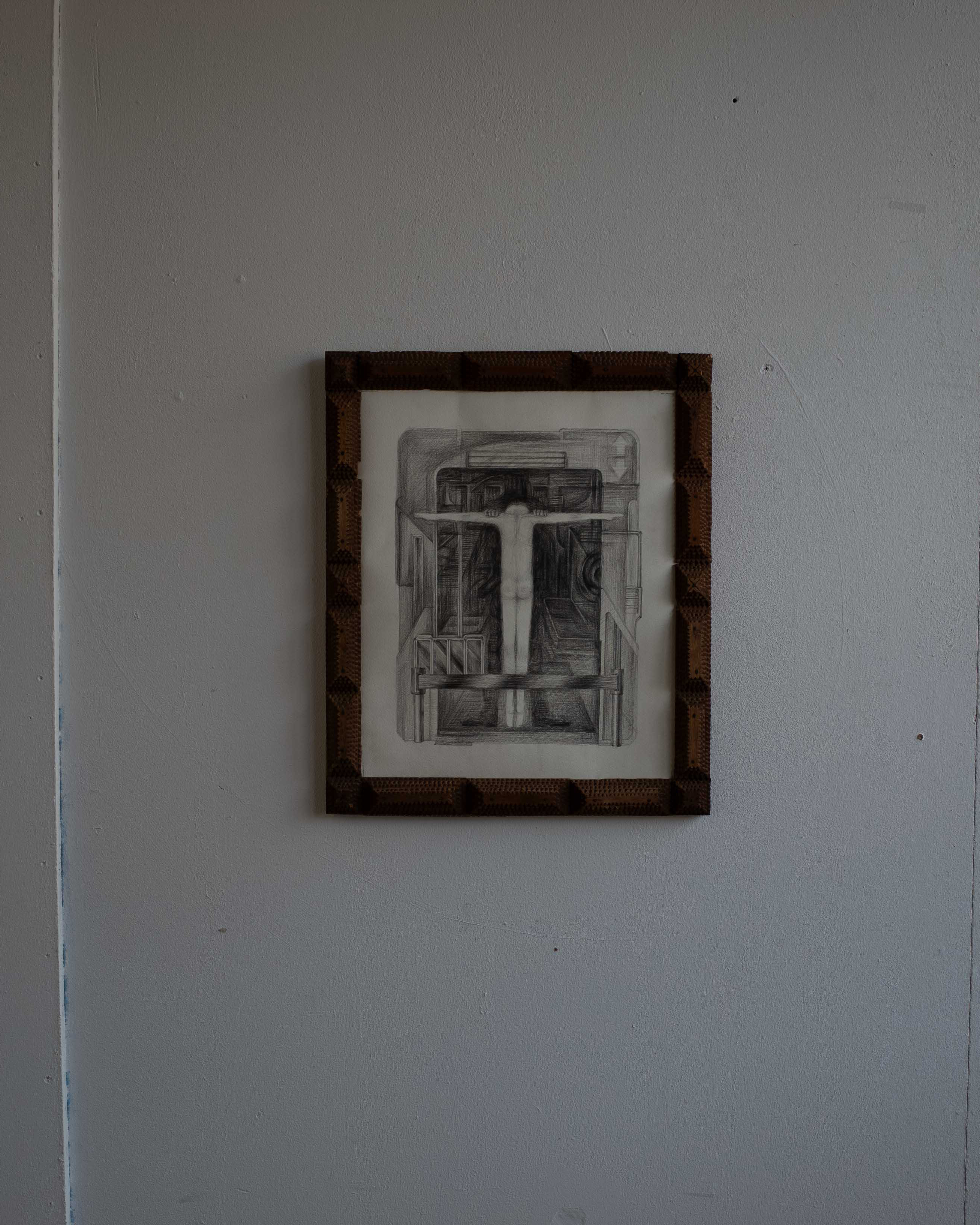
SHAME presents an interplay of life-sized, in-house manufactured puppets, meticulously fragmented, defying a definitive count of the figures displayed. Placed within a classroom-like environment, the checkerboard floor further amplifies the sense of disorientation. Periodically, the space is filled with a pitched-down monologue, an audio play weaving narratives from three distinct novels. The monologue is composed using the cut-up technique, a method that mirrors the fragmentation and reassembly inherent in the sculptural work.
The installation is presented in a building complex on premises with a varied history of social, industrial, and educational functions. Initially, the area was home to an iron mill. In response to increasing youth crime in late 19th-century Sweden, a disciplinary shelter was established, which provided education and vocational training for troubled young boys. Over the years, the establishment faced numerous challenges, including a devastating fire set by one of the boys.
SHAME - In-house manufactured puppet made of plywood and chipboard mix covered in wood-dust and glue amalgam, in-house fabricated brackets, 19th-century iron links, aluminum profiles, floor matt, homemade pallets, Fight Club by Chuck Palahniuk, Solaris by Stanislaw Lem, The Witcher by Andrzej Sapkowski
Monologue in collaboration with Elif Satanaya Özbay

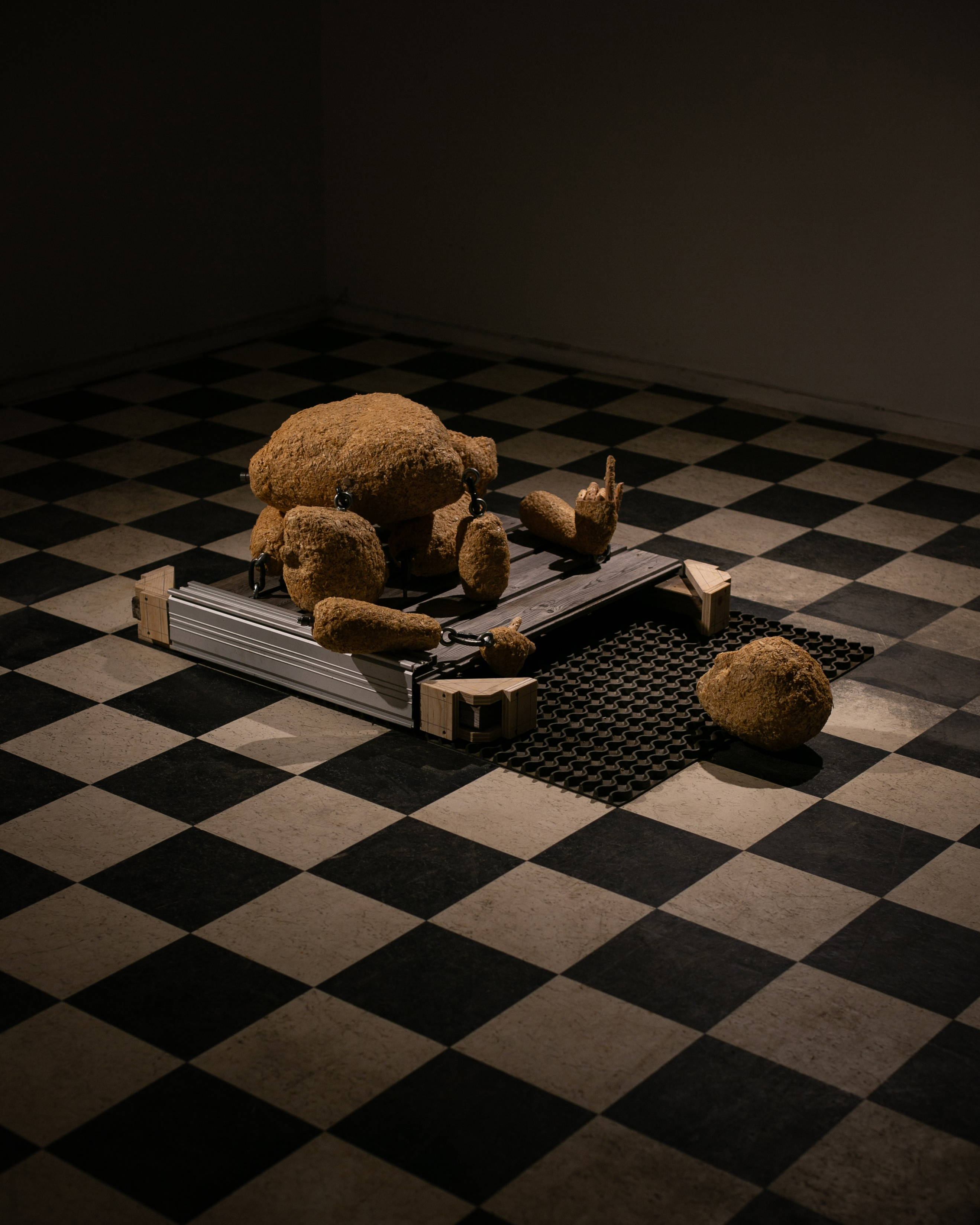
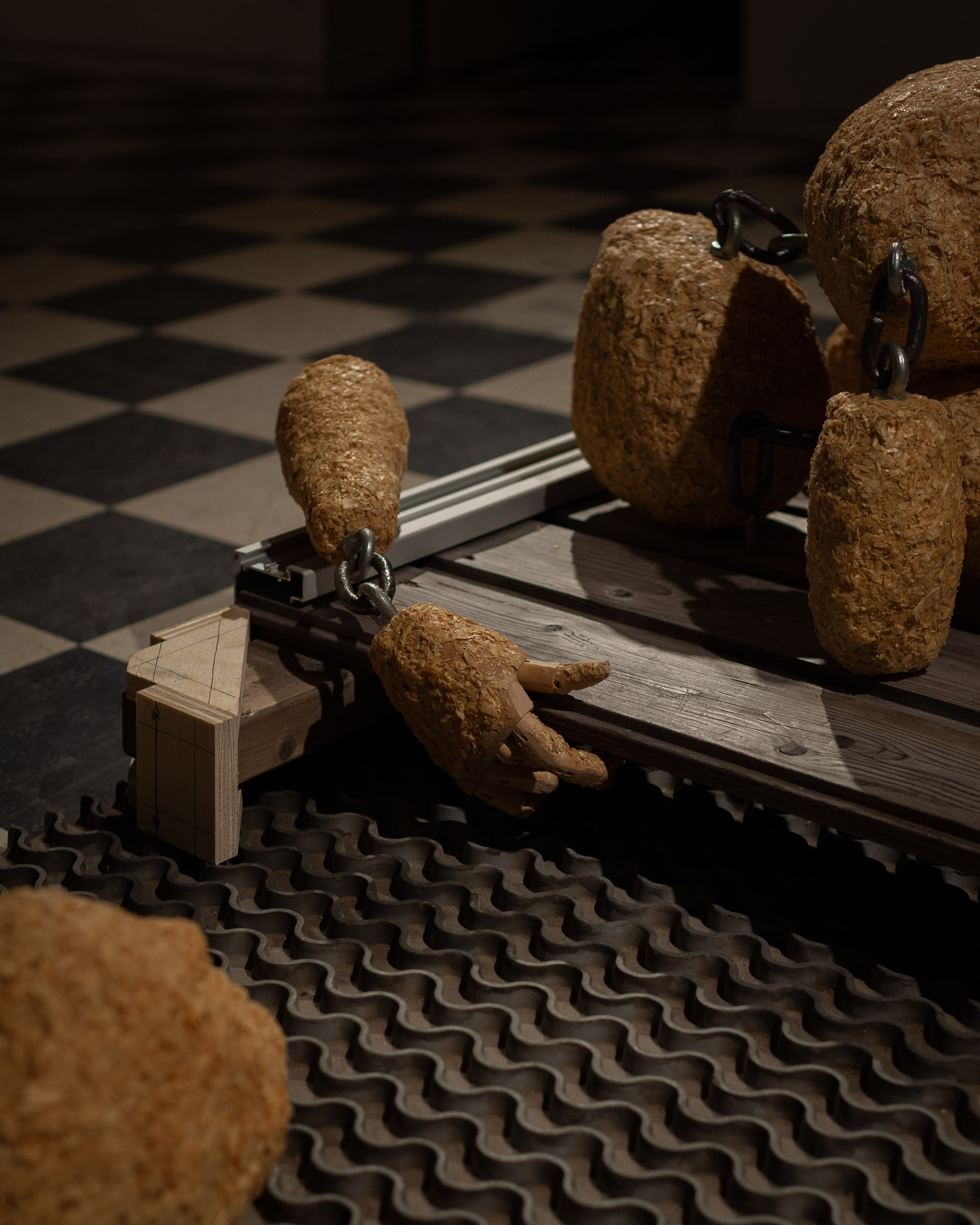
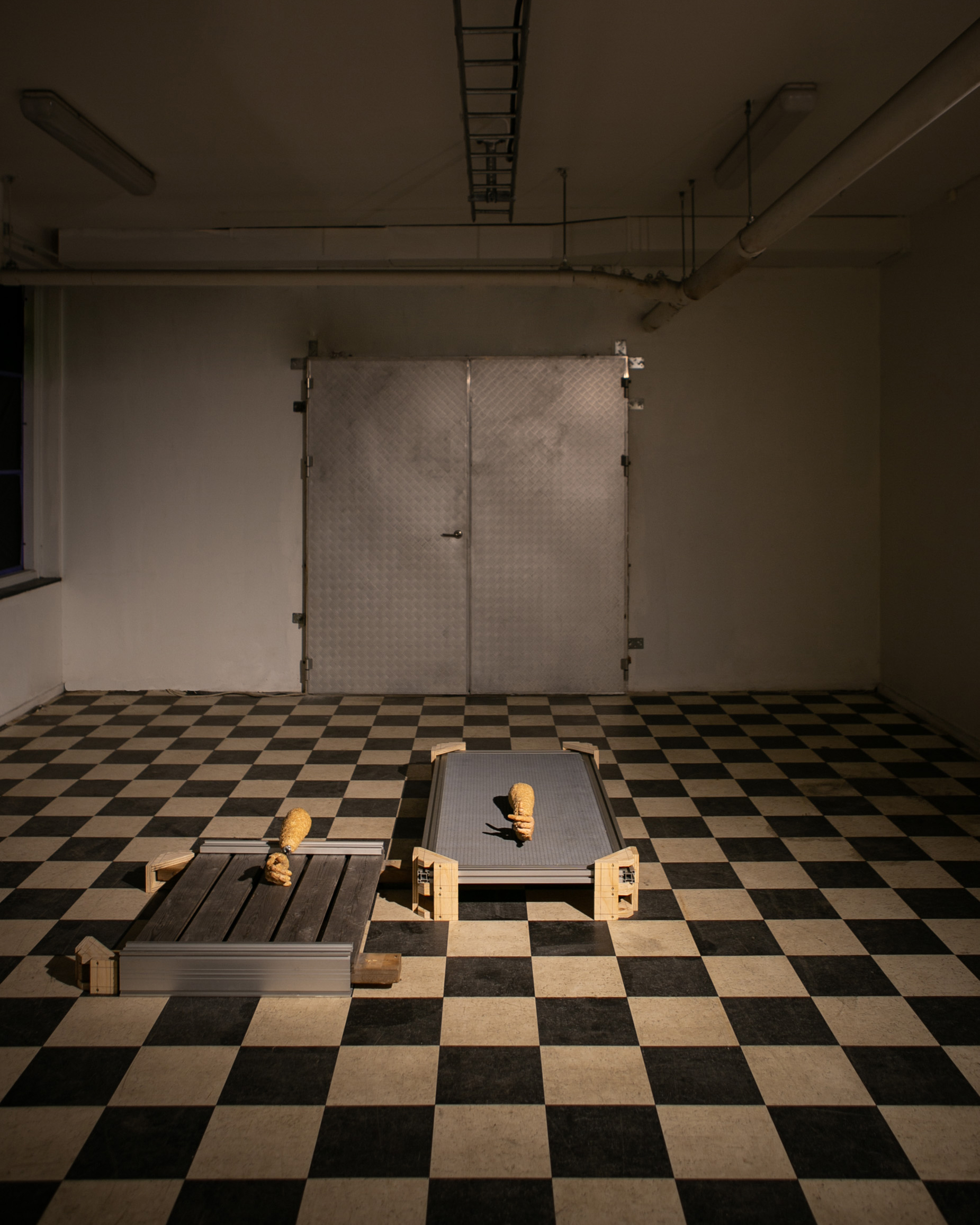
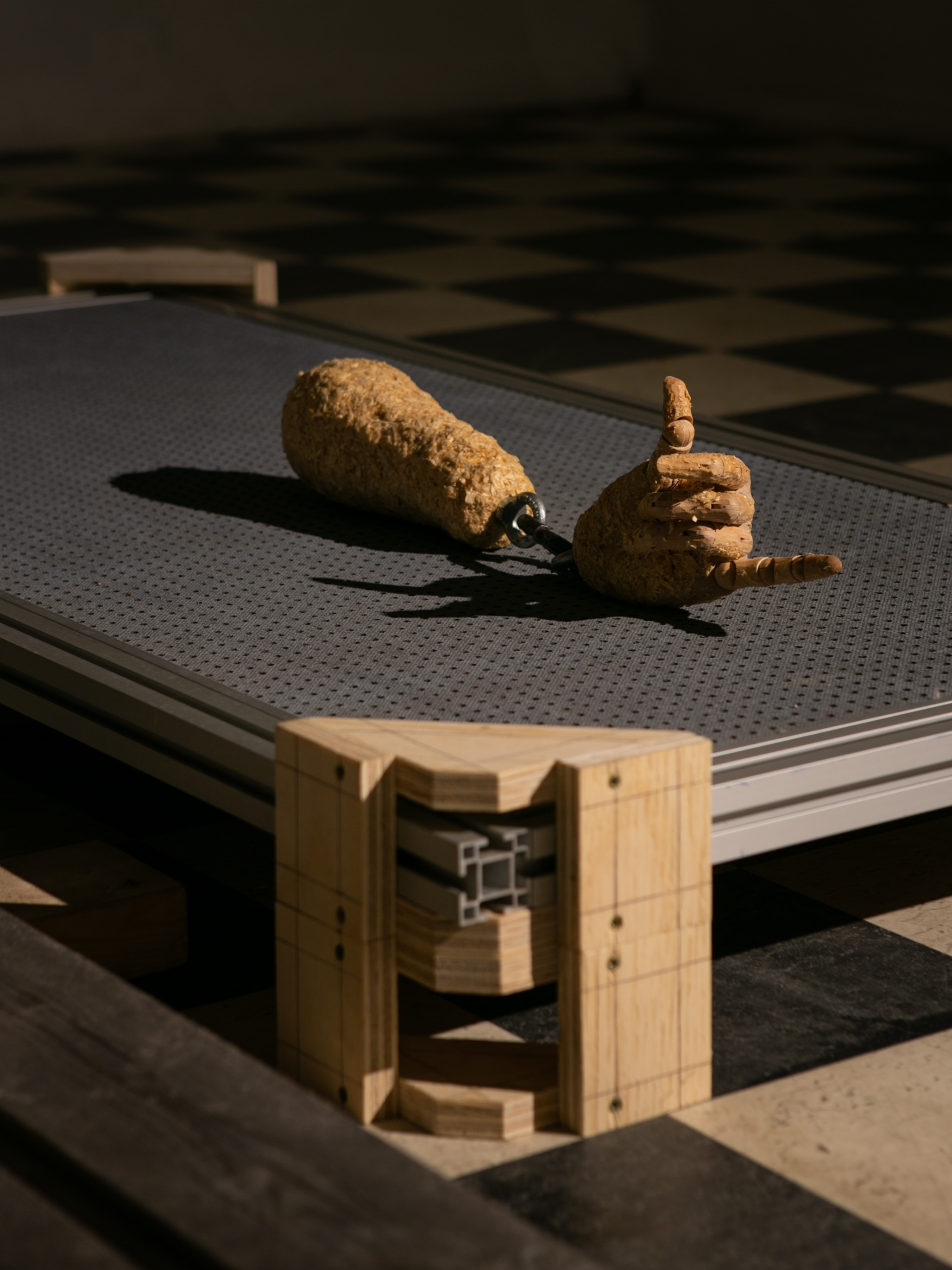
“One more step forward, cautiously. The hallway seems long, but I can make out its end. I can discern a dim light which is flickering far in the distance, so it seems. I am not sure where it leads to. My foot comes down on something. A crack echoes all the way through. I sweep my foot across the floor, breaking it in smaller parts. It could be old paint, flakes that have peeled from the walls over time.
As I approach the corridor’s end, the flickering, faint, glow hints at a larger space ahead– of a different volume. Something inside that space radiates a subtle light. I enter the room, struggling to get a feel for its dimensions. Gradually, shapes emerge from the darkness. I make out the contours of objects lining the walls and scattered across the floor—piping, equipment or instruments of some kind.
Time seems to stand still as I become aware of the light’s source. A soft, golden radiance permeates the space, as if emanating from the very materials that form the room. How long have I been standing here? My eyes are drawn to an object on the floor. It’s an old wooden chest resting on small legs. This is where the light emanates from. The golden glow seeps through its seams, it draws me closer, it pulls me in—closer, closer.”
Joar Torbiörnssons installation Chamber 5-10 blends historical and site specific influences with personal experiences. It was made during this year's residency and part of our exhibition “I Guess You Wonder Where I’ve Been”, and which was co-curated by the residency participants.
Desk - Jute sacks, drawing, lamp, soil, glass, desk, aluminium rod
Notice - Drawing on copper print paper, notice board, nails
Shelf - Wooden shelf, jute sack, tooth, glassfiber, motor
Abdomen - Leather, Walnut, hinges, styrofoam
Cartwheel - Metal, pendulum, epoxy clay, ratchet strap
Ear - Drawing on copper print paper, wood
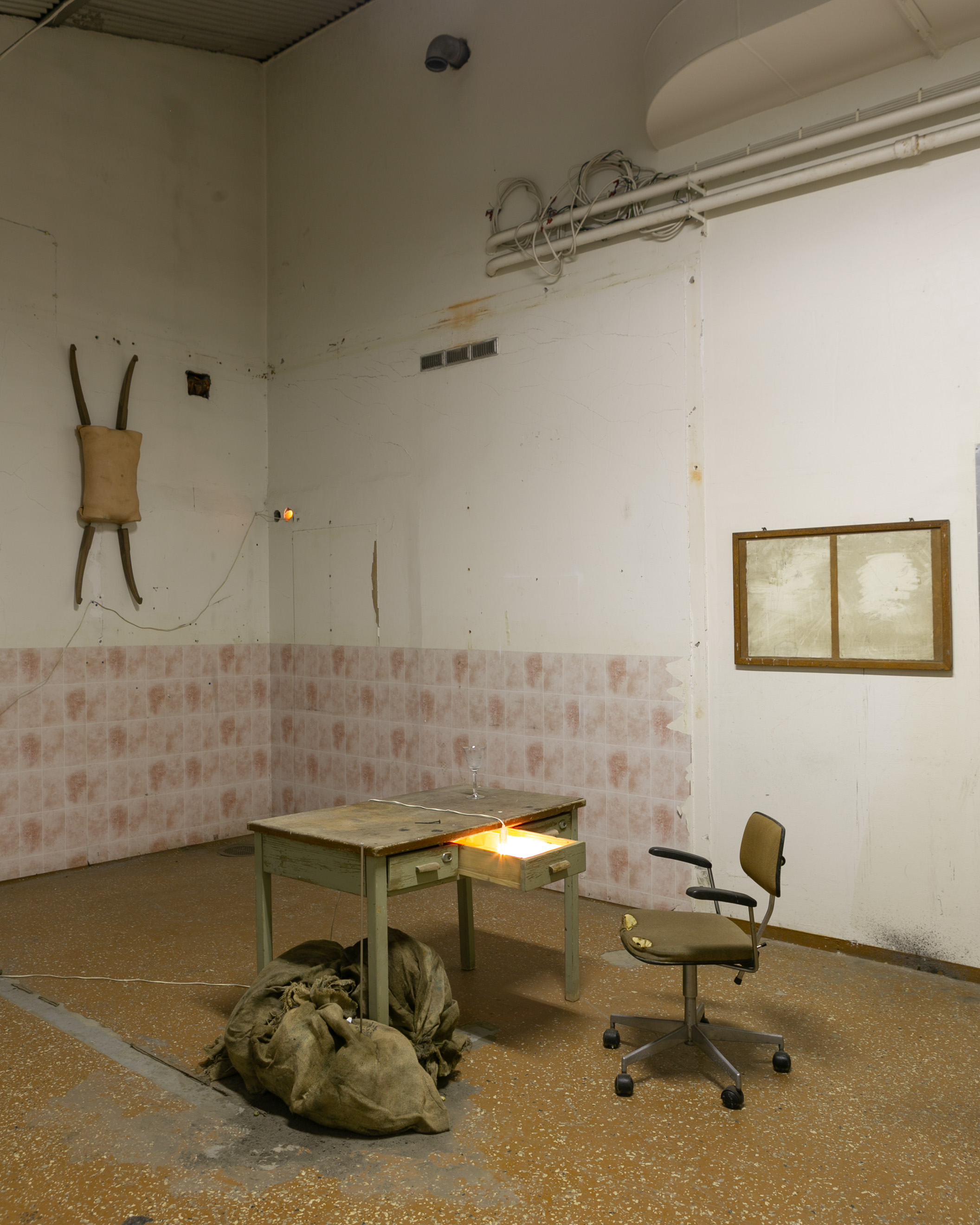
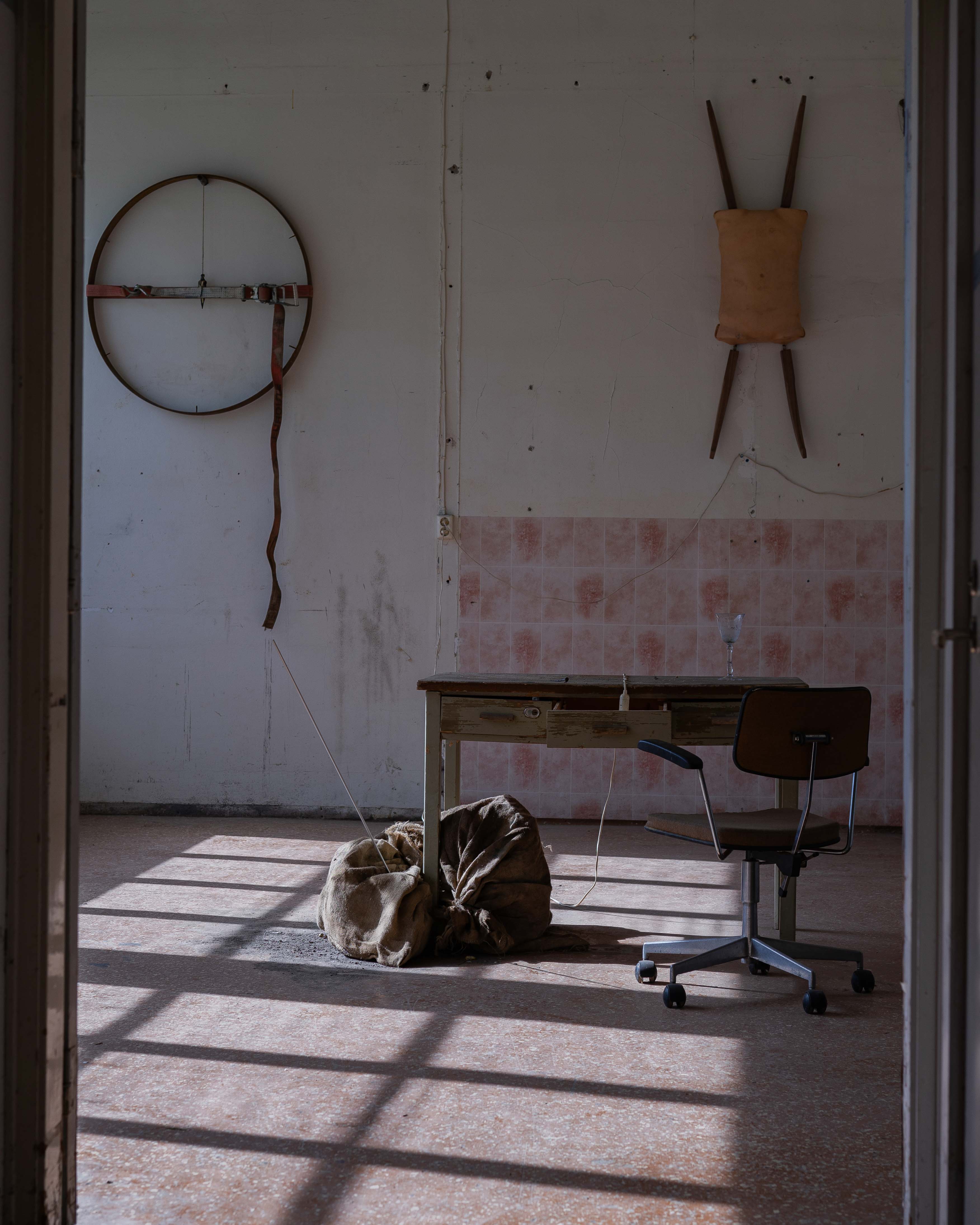
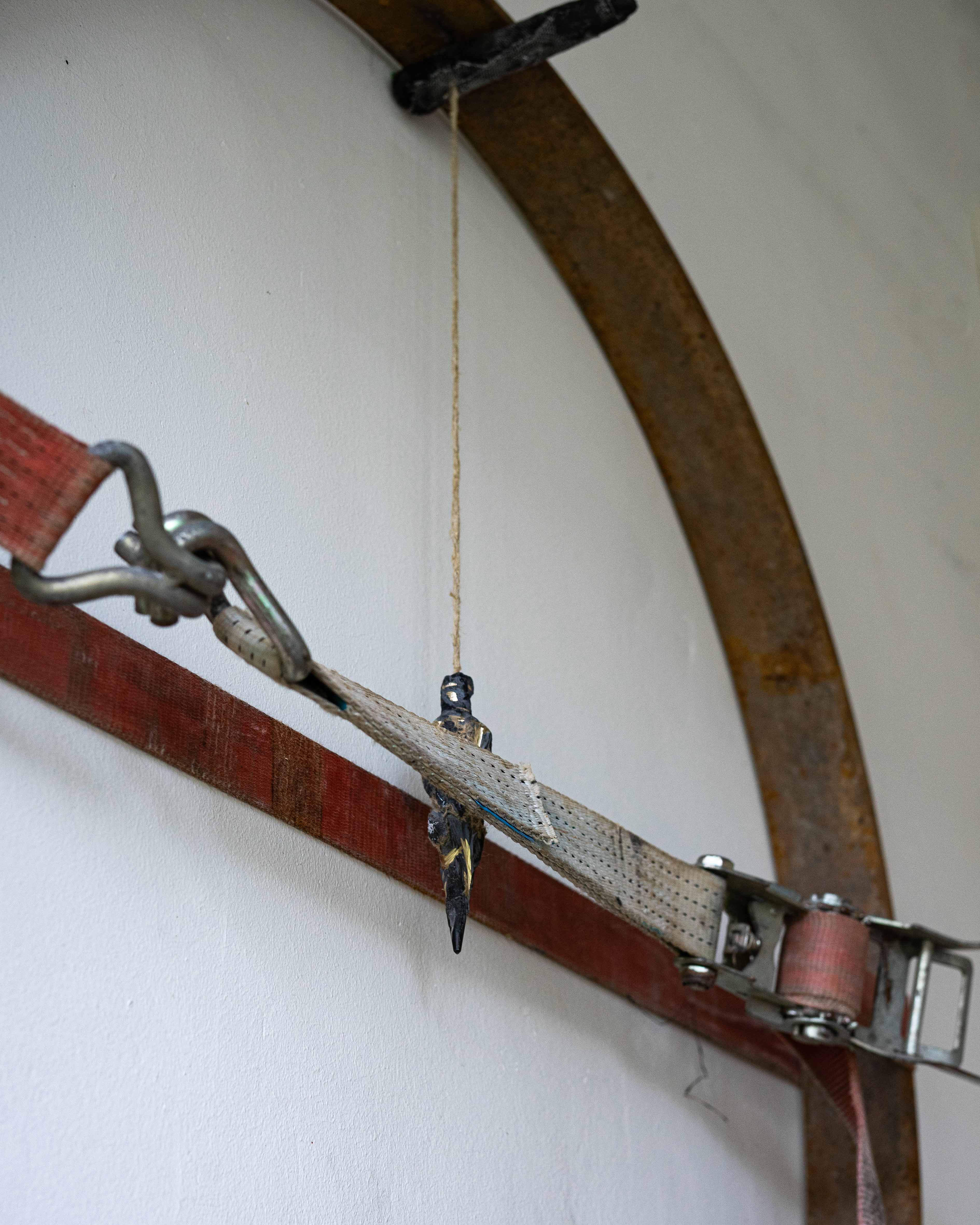
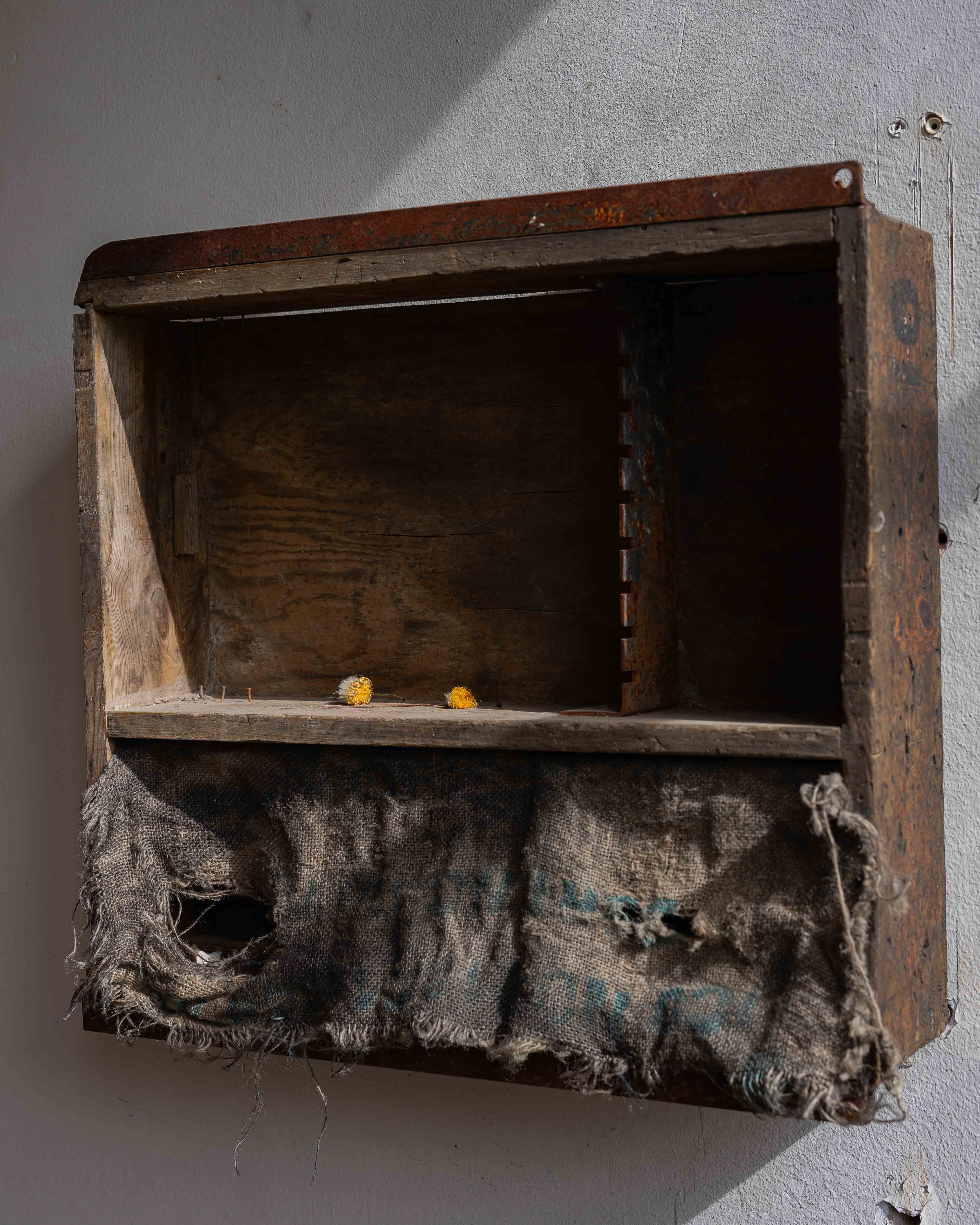
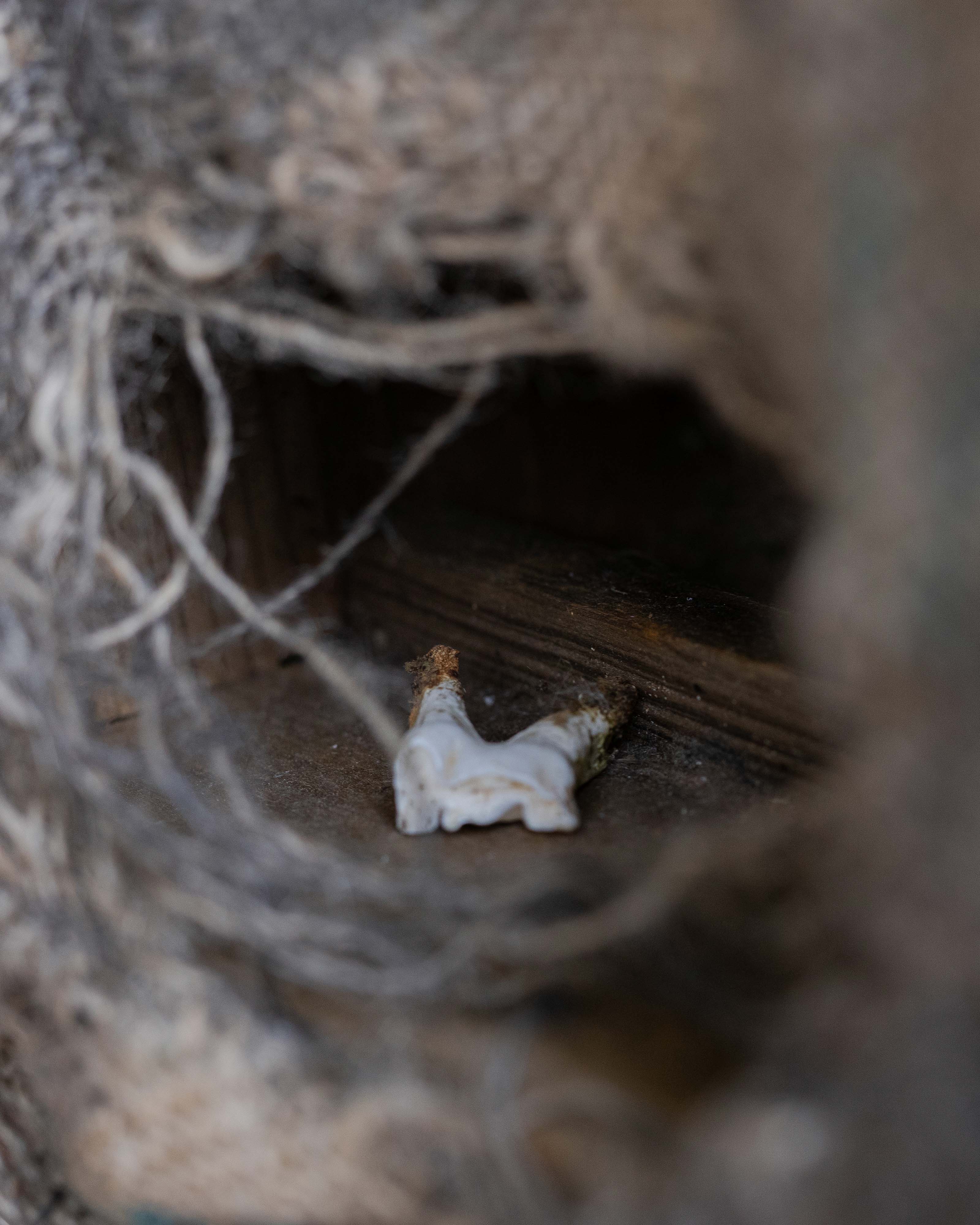
The video installation 'Slipping and Slithering,' inspired by the human experience during the ‘Little Ice Age’, explores adaptation to harsh cold and anomalous weather. Ice skating, popularised by the invention of metal blades, often served as a metaphor in paintings. The work also draws parallels with the residency’s locality—a former iron mining town sometimes referred to as frozen in time. The eerie imagery and sound of iron etching the ice examine how the act of slipping is represented and conveyed across contemporary media. The video resonates with the act of sliding one's finger through an endless stream of images on a timeline, with scenes reconstructed and manipulated into digital imagery, looping in an eternal present.
The installation consists of a rear video projection onto frosted glass doors, accompanied by a freezer found in the area of the residency, which contains a locally discovered, hand driven iron hinge.
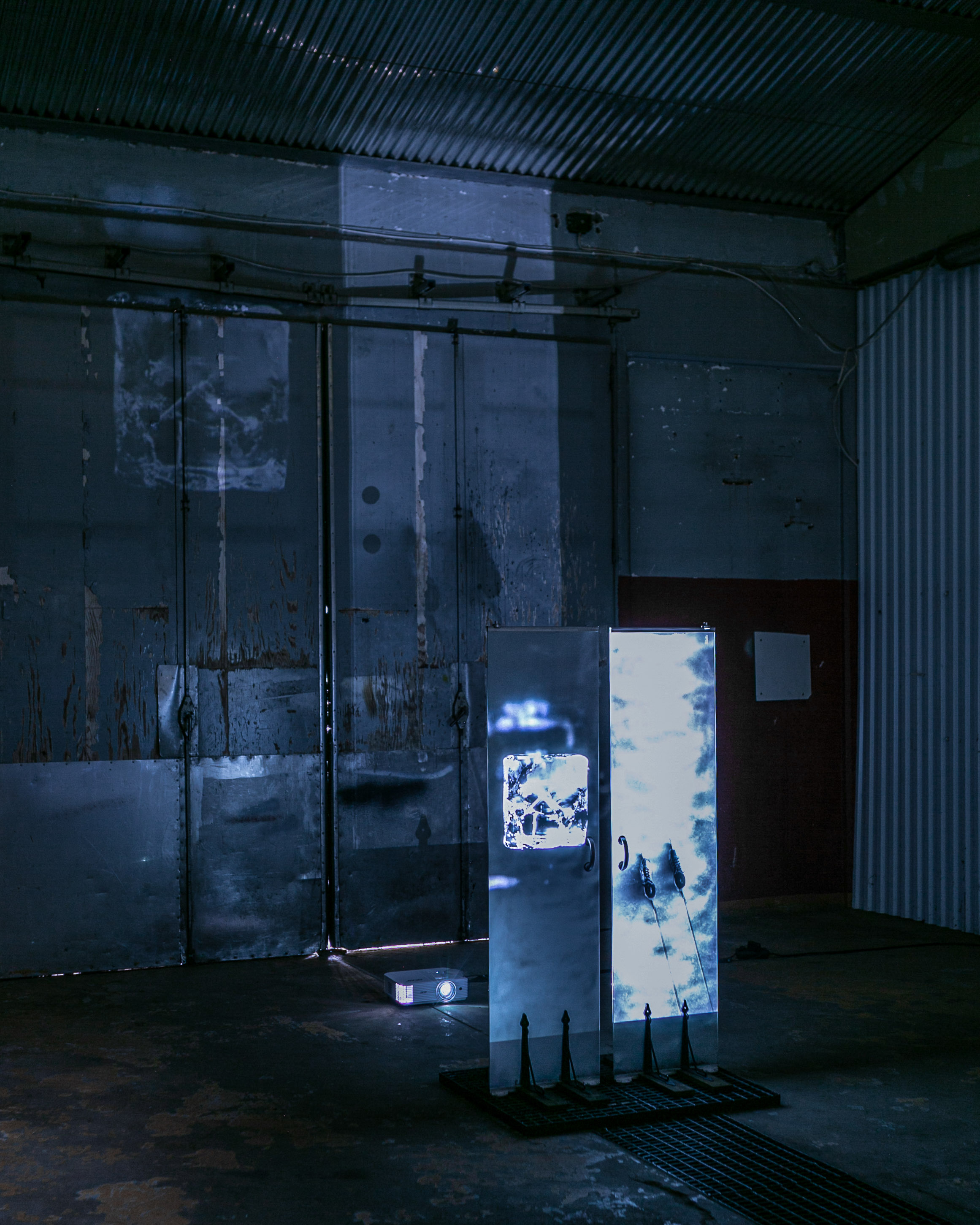
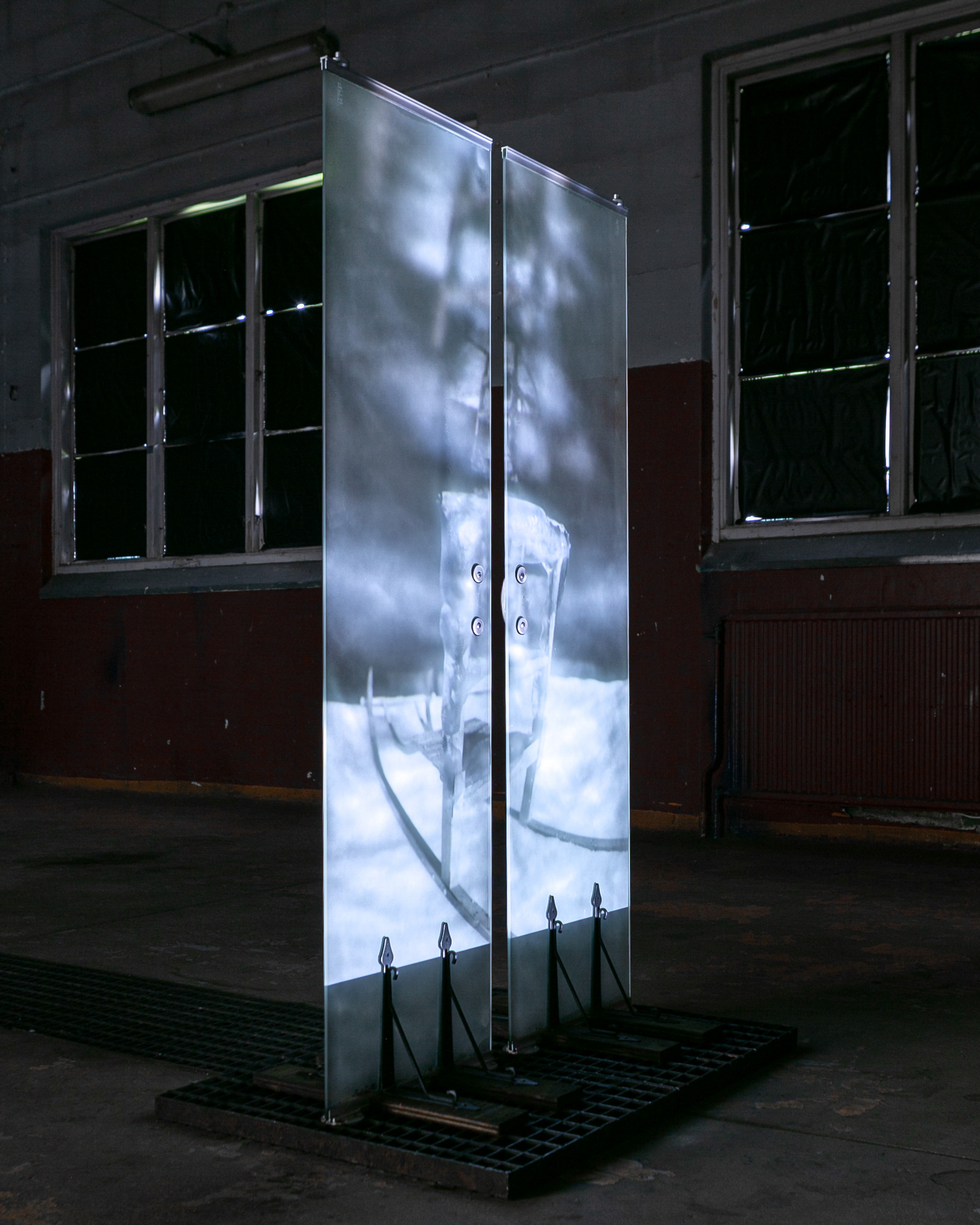
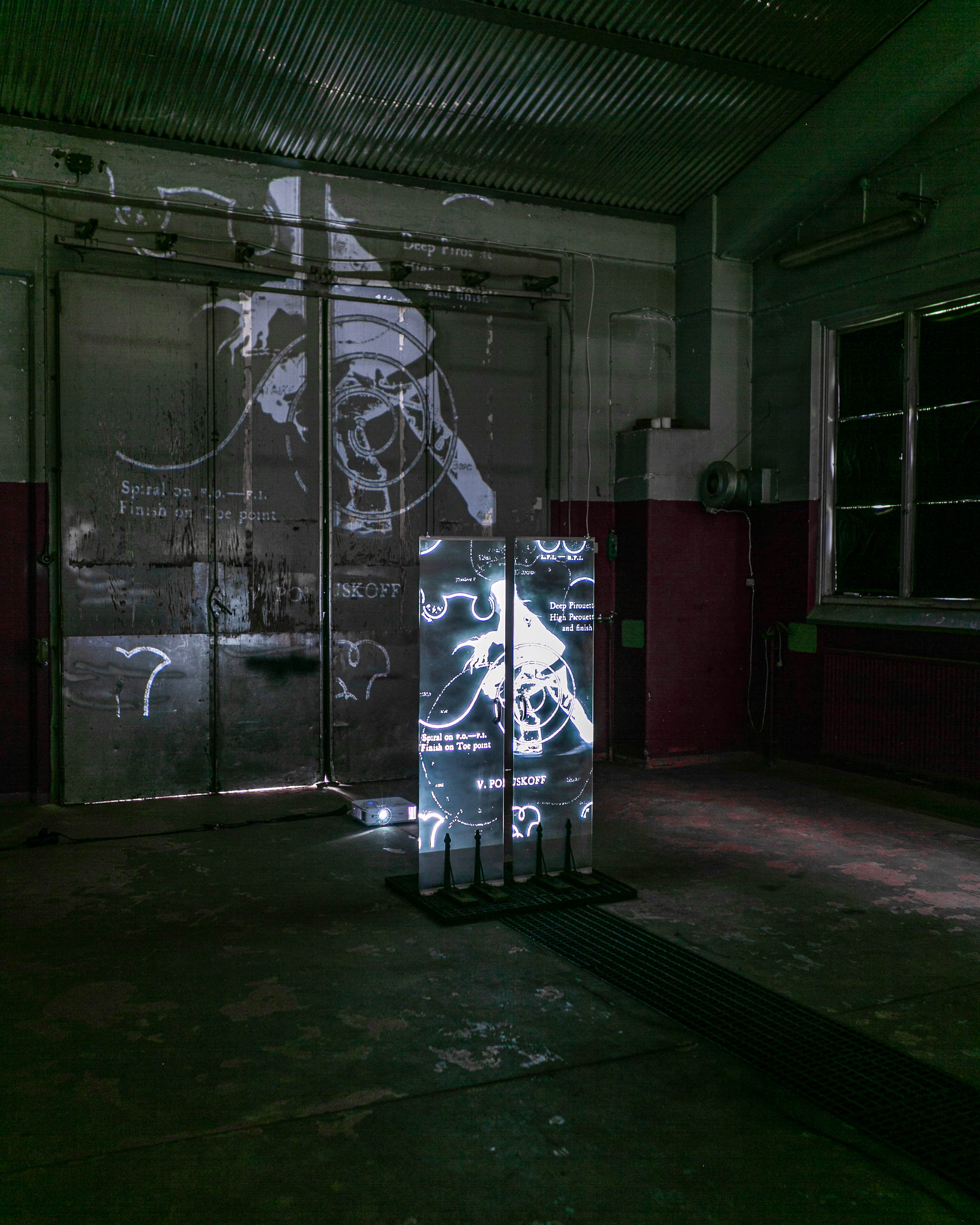

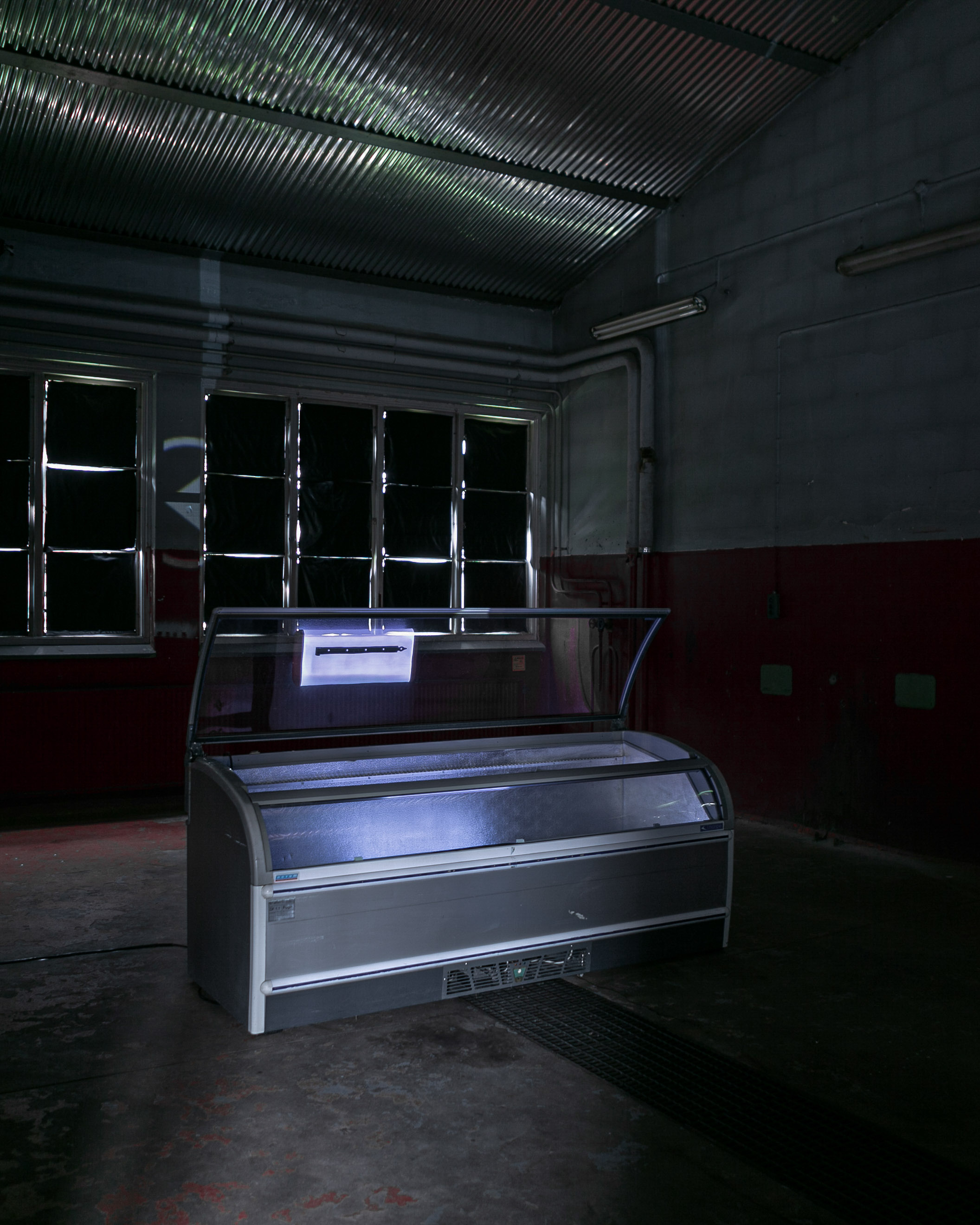
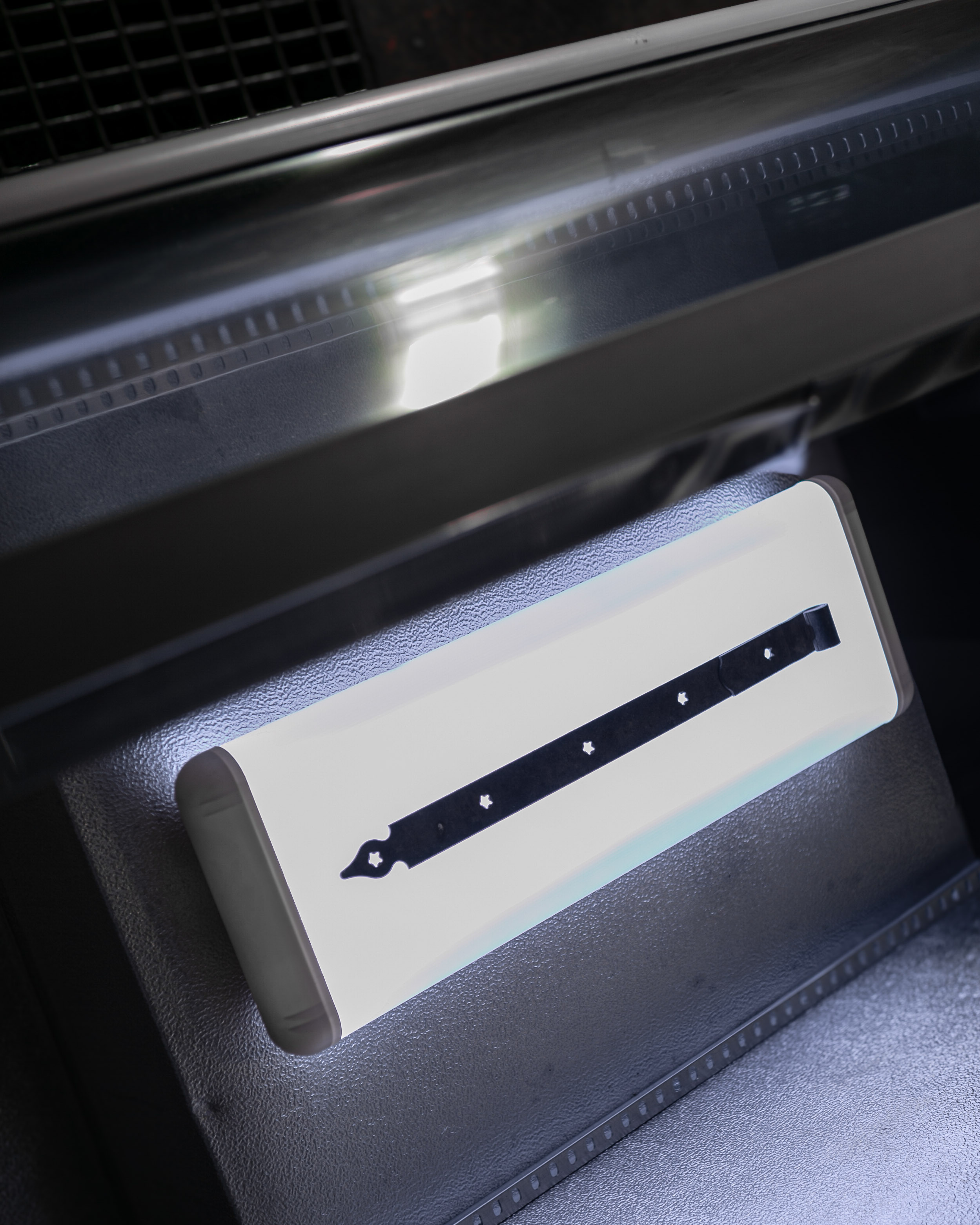
On cycles of generational trauma. The burned and oxidized bodies of steel are leaning on each other, transmitting the subconscious patterns that elicit its continuation with the influence and government over relationship to self and others. The work also tunes in with the residency’s location and mirrors parts of its twenty century history as a correctional institution for young boys and a refugee centre that harboured inherited wounds. The majority of the materials were found on site, embodying the process of engaging with what’s present.
Offspring - 55 × 200 × 130 cm, burned and oxidized steel horse trailer
Epigene - 154 × 151 × 90 cm, burned and oxidized steel horse trailer, aluminium light diffuser
Transmission - 89 × 125 × 105 cm, oxidized steel chair frames, aluminium light diffuser
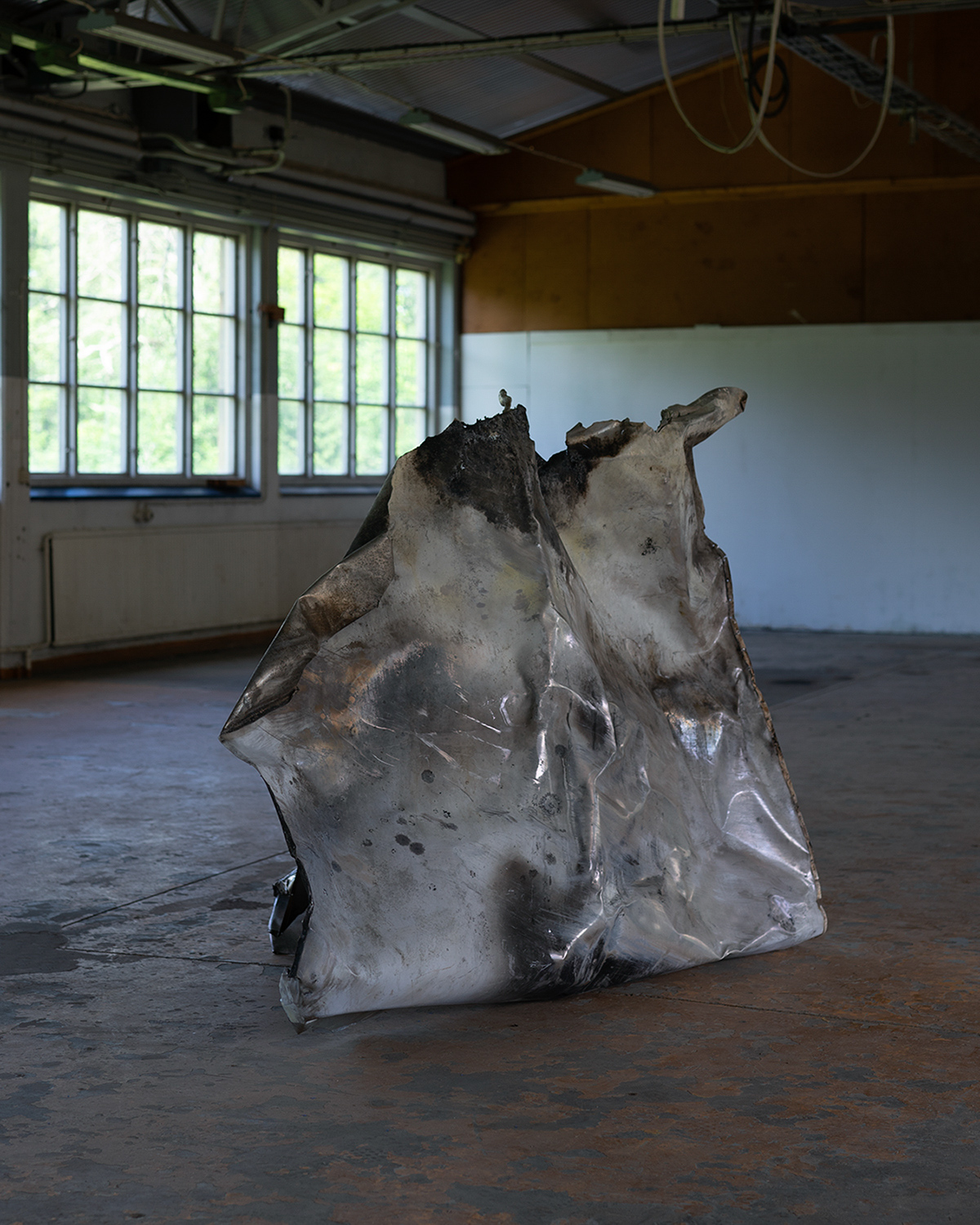
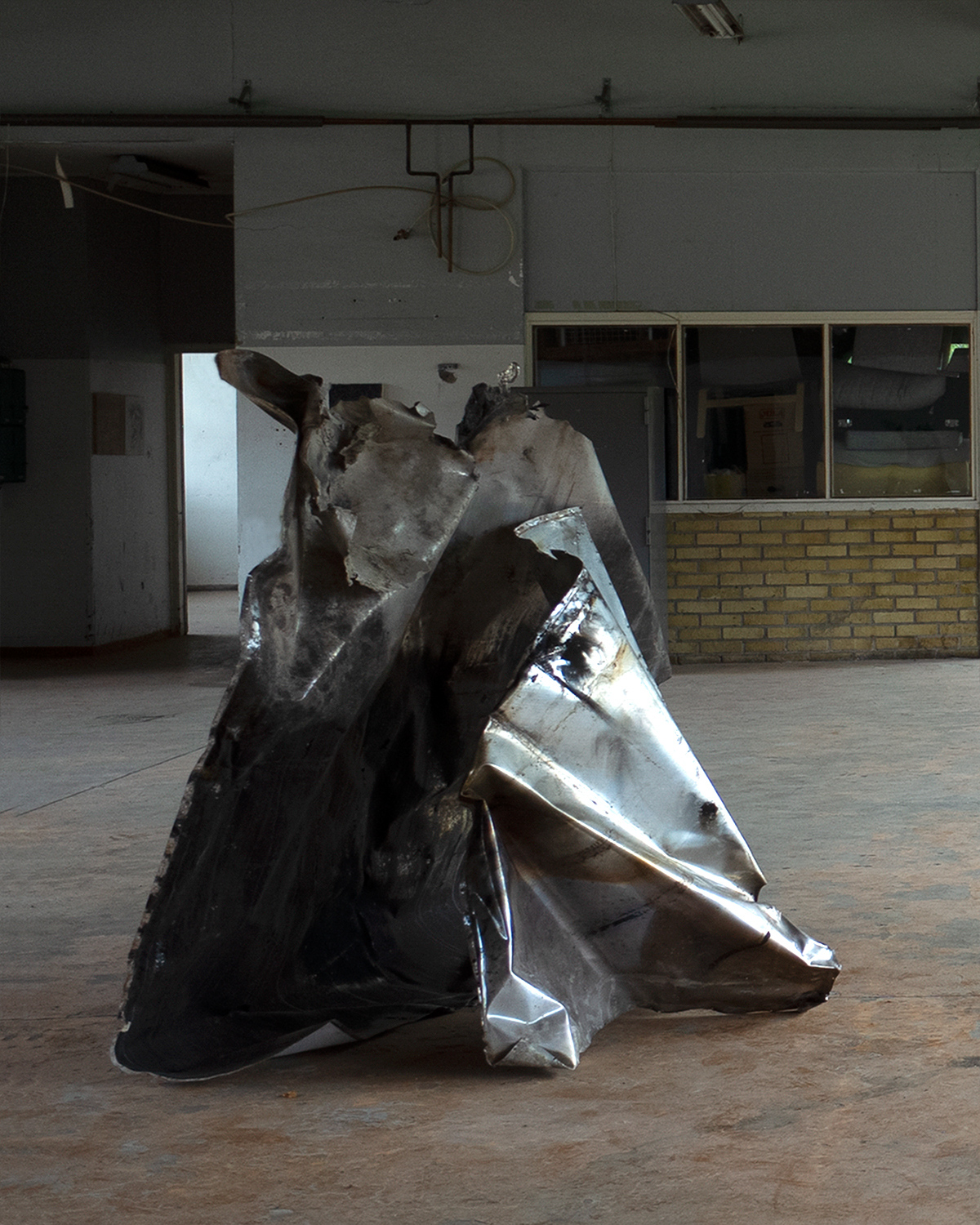
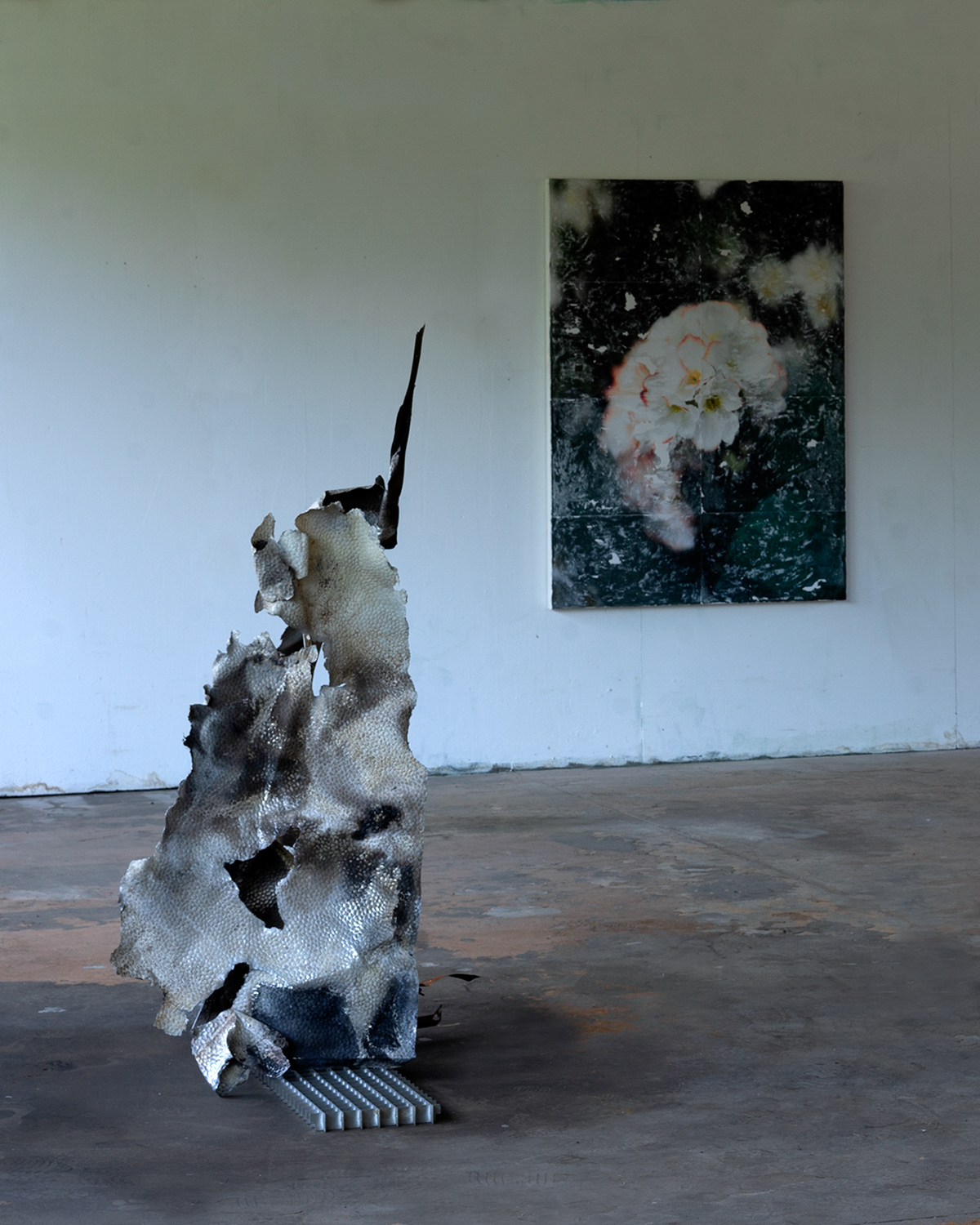

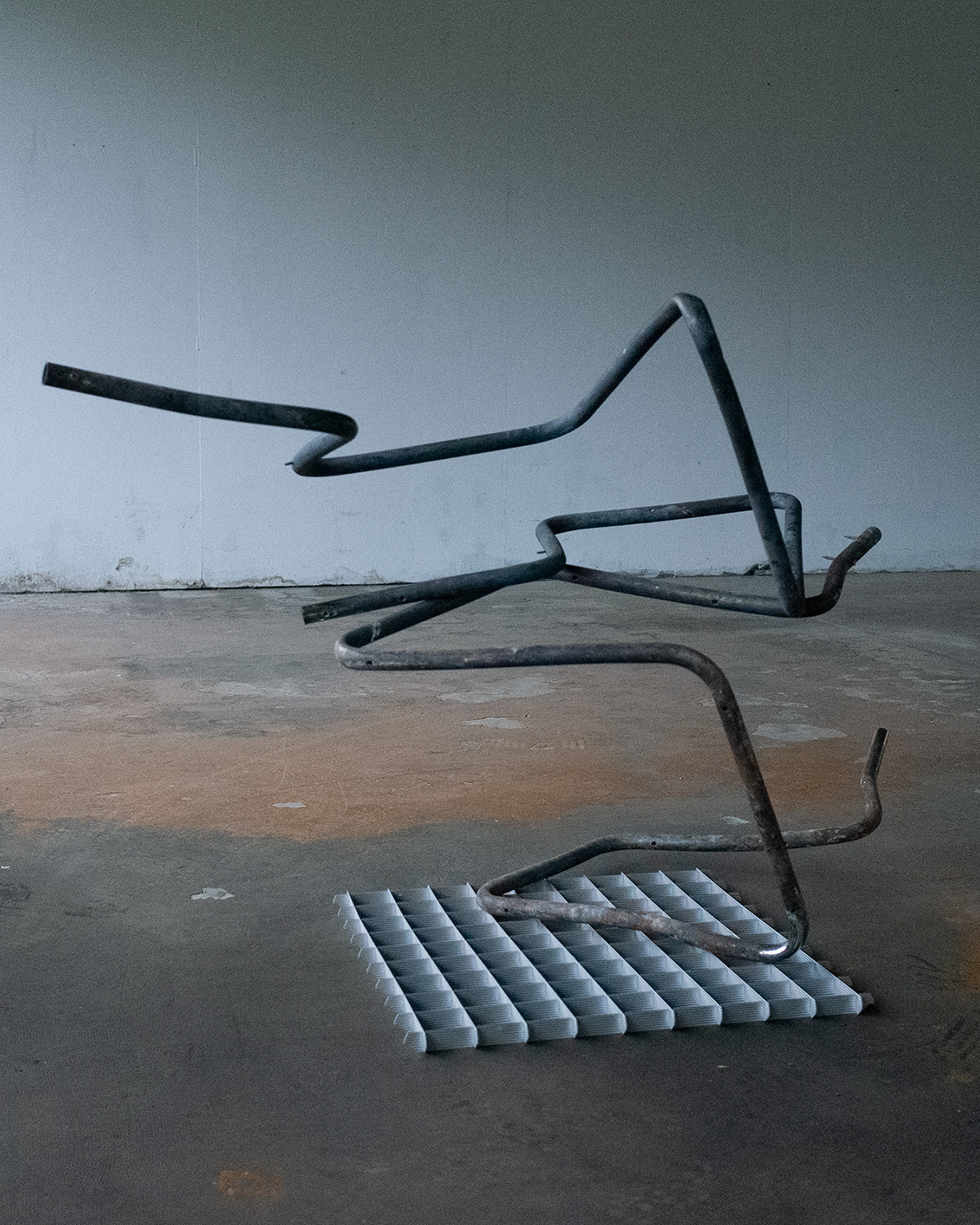

The 2024 residency was supported by the European Union and the Goethe-Institut, Region of Värmland and Swedish Arts Council within Creative Europe.
